







Transport for NSW (TfNSW) has confirmed that the new structure will be 10 meters higher than the current bridge, which stands approximately 8.4 meters tall. “The flood resilience of the bridge is determined by the height of water it can withstand while remaining operational. The new bridge, with deep girders, will be resilient to a 1 in 20-year flood level,” a TfNSW spokesperson told the Hawkesbury Post. The 1:20 flood level is 15.3 meters, while the 1:100 flood level reaches 18.9 meters.
The new bridge will be built about 50 meters downstream of the existing structure, which will be retained. It will also extend longer than the current bridge, connecting to the existing Bells Line of Road at a higher point. On the southern side, the new approach road will also be elevated to withstand a 1 in 20-year flood.
The new Richmond Bridge, will tower over the surrounding riverine landscape, at more than double the height of the existing bridge. The structure will also be far longer, a necessity to rise above floods crossing the lowest part of the floodplain. Set to be approximately 18.4 metres high at its peak, the new bridge will be a much more dominant structure than many may have envisioned.
The existing Richmond Bridge is built below the 1 in 2 chance per year flood level and is closed in moderate flood events when flood levels reach about 8 metres. Prior to 2020, Richmond Bridge
had not closed due to flooding since 1992. Since 2020, Richmond Bridge has closed six times due to flooding with flood levels reaching up to 14.4 metres in March 2021
Transport for NSW told the HP that the new bridge would have provided an evacuation route during all flood events since 2020. “We are finalising the concept design and Review of Environmental Factors for Stage 2 of the New Richmond Bridge and Traffic Improvements project,” the spokesperson said. The Environmental Impact Statement (EIS), initially due in mid-2024, is yet to be released. This report will include a crucial hydrology study to assess the impact of flooding on the route and surrounding lands and evaluate how the new infrastructure will affect water movements across the floodplain. Public feedback on these plans will be sought later this year.
The Final Hydrology Report prepared as part of the Green Route in January
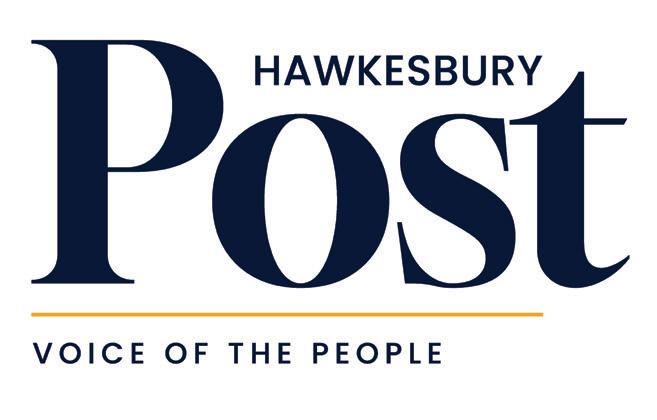
www.hawkesburypost.com.au
www.facebook.com/hawkesburypost
How to get the News
The Hawkesbury Post is available at all Hawkesbury newsagents free of charge and 100 other local locations.
Online
All stories can be found online. www.hawkesburypost.com.au
New stories are added daily.
Contacts
Editorial info@hawkesburypost.com.au
Advertising trish@hawkesburypost.com.au
Design and production Design2Pro

Many of us in the Hawkesbury live in reasonable proximity to the river and many people have views on its future without much consideration of its past.
For many thousands of years we have had a river in this region. There are a few lagoons which suggest that the course of the river has changed from time to time and for those of us who remember the 1956 flood these changes were highlighted as the Breakaway was formed at the same time as the river eroded near Wilberforce so if there was further flooding with no remedial work Windsor may well have been on a lagoon when the river changed course going from Freemans Reach to Wilberforce. This confirms that the river is dynamic.
Historically we had a navigable river to Windsor, certainly not now for large watercraft. The locals prewhite, probably not so much cared for the river, but did not “farm” to a point where they changed the environment as it was then. As difficult as it is now to comprehend the river was the main transport route for good and passengers at least until a road infrastructure was built.
Governor Macquarie found 5 towns all out of flood reach but in those days and until fairly recently farmers wanted to live on their farms so they built homes on or near the riverbank. Much better than walking 5 or 6 miles to and from the farm each day just to go to work, even if now many of us can sit in a car for 2 hours a day to now go to work and this may be equivalent to the walking time to the farm.
In local government, transparency is not just a virtue; it is a necessity. It is the cornerstone of public trust. When transparency is absent, inefficiency and public distrust follow. The recent issues with the Hawkesbury Council’s lack of transparency highlight the dangers of operating in shadows.
Transparency ensures that the actions and decisions of elected officials are visible to the public. It allows citizens to hold their representatives accountable. When transparency is lacking, it creates a fertile ground for perceived corruption and mismanagement, resulting in a government that serves itself rather than the people it was elected to represent.
The Hawkesbury Council’s behavior exemplifies the perils of opacity. Ratepayers are left in the dark, unaware of how their money is being spent or why certain decisions are made. Examples include the $32.5 million loan to fund repairs works on the Windsor sewer, the mismanaged Lower Portland Ferry contract and even the rate-payer funded defamation action taken against this newspaper.
Now, the Council doesn’t even believe it has any obligation to inform its 69,000 residents whether or not the elected Mayor is still doing her job or, if not, who is. While personal challenges are difficult for any leader, civic leaders must be visible and do the job or step aside. The Hawkesbury has too many urgent needs to be left rudderless.
The impact of a lack of transparency goes beyond mere suspicion; it leads to inadequate public services, neglected infrastructure, and a decline in quality of life. When the public loses faith in its government, civic engagement declines. This apathy weakens the democratic process, allowing those in power to operate with even less accountability.
To restore trust and ensure good gov-
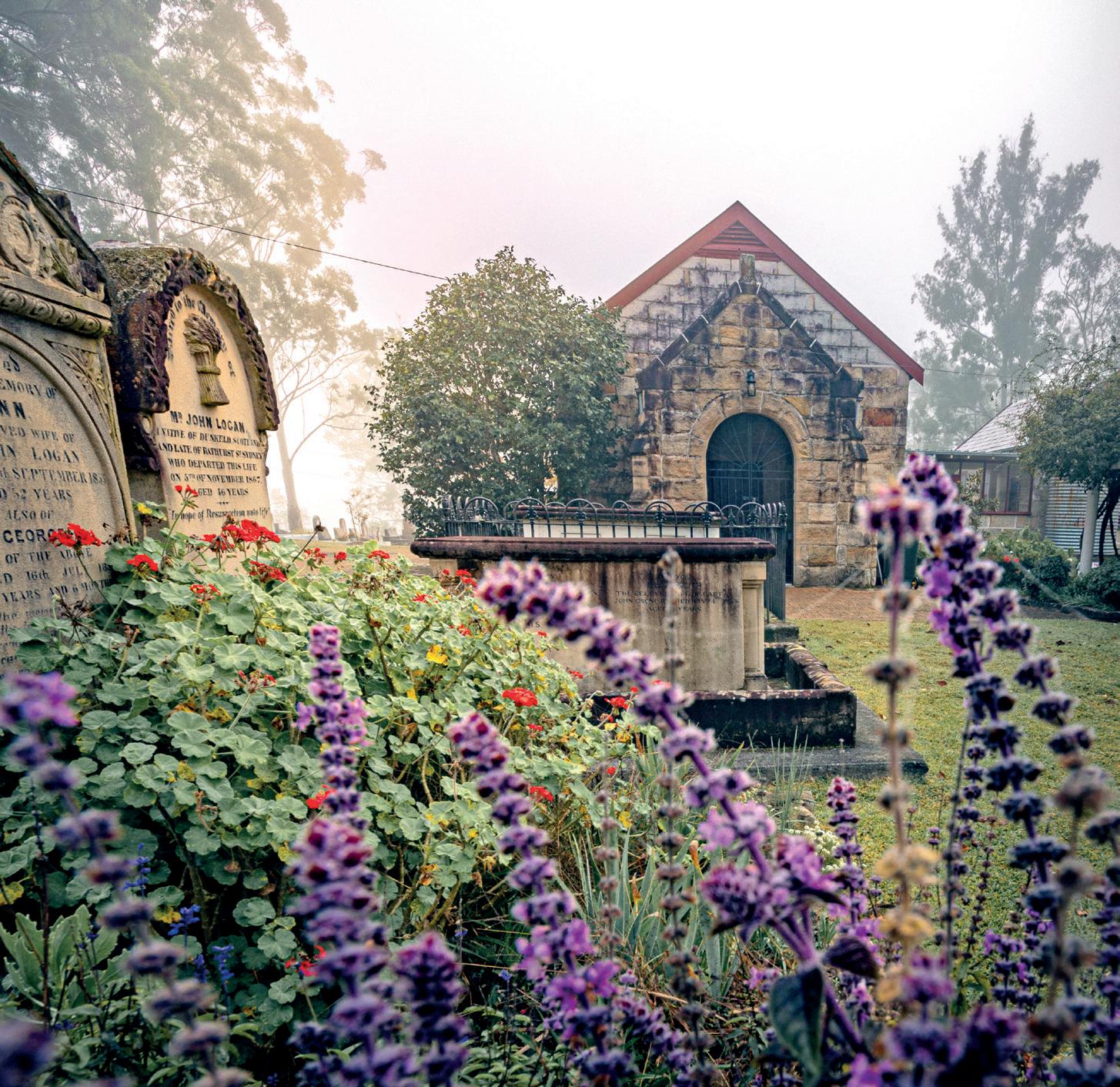
ernance, the Hawkesbury Council must not just commit to transparency it must engage in it. This means making information available to the public regardless of any inconvenient truths. Council must also listen to and address the concerns of its constituents. Transparency is the bedrock of a healthy democracy. Without it, local governments become breeding grounds
Probably about 35 years ago the local council dissuaded development in flood zones which was fairly successful. It at least avoided the subdivision of farms clearly in the flood zone. I recall at the meeting this annoyed a few farmers who wanted to subdivide but the overall council and citizens meeting led to the current position.
Many articles seem to be written on how we further change the river to eliminate, or at least lessen the flood impact but the area is only here because of flooding. The river flood plain has reasonable soil which allows for many forms of farming and eliminating floods will over a few hundred years lead to a degradation of the soil.
Surely the solution is to allow flooding, continue to vegetate along the riverbank to minimise erosion and construct a second Warragamba sized dam to service the Sydney area, rather than lift the wall and try and eliminate flooding. One expects that there may be environmental difficulties with any new dam but as difficult as this is for environmentalist to grasp this will be needed even if we recycle waste water as we are too reliant on one major water source which if it gets contaminated or fails leaves our part of the world (the Sydney basin) with a real headache.
Whilst I do feel sorry for people affected by floods we should look at the historical situation, build another dam and allow for more controlled flooding of our river. The new dam can be remote from our area. Campbell Anderson Richmond
To the Editor,
An article in your June edition caused me considerable alarm. I was one of a group who formed Hawkesbury Harvest over twenty years ago. Our aim was to retain the essential character of the Hawkesbury. We pushed the concepts of agri-tourism, artistic interests, agriculture and appropriate food and dining interests. However, you reported in the June edition “Hawkesbury braces for 7,000 strong housing onslaught.” If, as you reported in the article headlined “the Hawkesbury braces for 7,000 strong housing onslaught” were to eventuate, such aims would be destroyed.
Your article outlined that the NSW Department of Housing, Planning and Infrastructure has announced the exemption of the Hawkesbury which allowed what would have been very substantial residential development under the (SEPP) plan. This decision is not necessarily a final win: it is only breathing space. The original Greater Sydney Development Plan earmarked Penrith, Parramatta and Liverpool as satellite cities. The Hawkesbury was to be retained as “open space”. In discussions I had with very fine and dedicated employees ot that organisation I asked if the zoning of the Hawkesbury as open space was “set in stone”. Their unequivocal response was yes. In light of that response on what basis did these developers feel they could lodge these applications?
It is said the children of darkness never sleep. The retention of the Hawkesbury fits into a much wider, exciting, grander vision.
As far as the Hawkesbury is concerned, an important development is the Badgery’s Creek airport. The plan is to fly fresh agricultural produce into South East Asia.
for inefficiency, alienating the very people they are meant to serve. The Hawkesbury Council must recognise the importance of transparency and begin to operate in a more open manner. Only then can they rebuild the trust of their constituents and serve the best interests of the community.
Editor, Samantha Magnusson sam@hawkesburypost.com.au
Whilst this area can play an important part, it would need to cooperate with the Central West. However, with the advent of alternative sources of energy, large areas of agricultural land in the Central West will be lost.
This development enhances the importance of local productive agricultural land. The basic concept of minimum lots of 10 acres should be retained. However, there is room for slimmed down European models of rural villages radiating into agricultural land. Perhaps a basic guide for such villages would be a diameter of two kilometres. There are some thousands of acres of agricultural land, including micro-climates, in the foothills enabling a wide range of products.
Bilpin has now developed into an mountain village serving as an agri-tourist template for the rest of the Hawkesbury. If properly developed, our area can be very productive and work for the common good. With its natural beauty it will eventually be the only open area in the Sydney basin. Where else can the growing population of Sydney enjoy an agri-tourism experience? What other city would allow its politicians and bureaucrats to let such a jewel of nature existing on their doorstep slip through their fingers?
To conclude, our area can only be saved and sympathetically developed at a political level. Is there a politician who will embrace this vision and thus guarantee the pleasure that future generations will experience by visiting this beautiful area? To fail would deny many people the experience of “the Tuscany of the South Pacific”. Shame to those who are in a position to lobby for such a vision yet choose not to. John Maguire Grose Vale
After 25 years of dedicated volunteer management, the iconic Wilberforce School of Arts is transitioning back to the care of Hawkesbury City Council. Built in 1925, this cherished landmark holds a special place in the hearts of many locals, embodying a sense of history, love, and, above all, belonging.
Neville Wearne, a 77-year-old resident of Wilberforce, has been a steadfast volunteer at the School of Arts for over two decades. As the deeds were being signed to officially remove the building from community management and hand it back to Council, he spoke to the Hawkesbury Post about the small building at 531 Wilberforce Road, Wilberforce, his fellow volunteers and its enduring place in the Hawkesbury community. For a moment, his voice briefly faltered when he recounted holding his wife’s wake in the very hall he worked so hard to preserve.
The decision to hand over management was part of a broader move by the Department of Local Government to centralise the administration of community facilities, many of which have been run by ageing volunteer committees.
The dedication and hard work of the volunteers ensured the hall remained in excellent condition. Neville described
“It’s disappointing in certain ways,” Neville admitted. “We’ve been doing it for over 20 years, some close to 25 years, and there’s no one new coming in. Volunteerism these days is on the decline.”
the multifaceted role of the volunteers, which included general maintenance, cleaning, and lawn care. “The money we got from the hire went into improving the hall,” he said. Over the years, the volunteers ensured the hall remained well-appointed, with upgrades like heaters, air conditioning, LED lights, and soundproofing. The building’s upkeep has been a community effort, with the Council contributing significantly to its refurbishment.
“Council put money into refurbishing the place. We’ve upgraded the disabled access, which also acts as a mother’s room with a pop-down baby changing table,” said Neville. These enhancements have made the hall more accessible and comfortable for everyone.
“We stood in front of bulldozers,” Neville recalled, describing the community’s
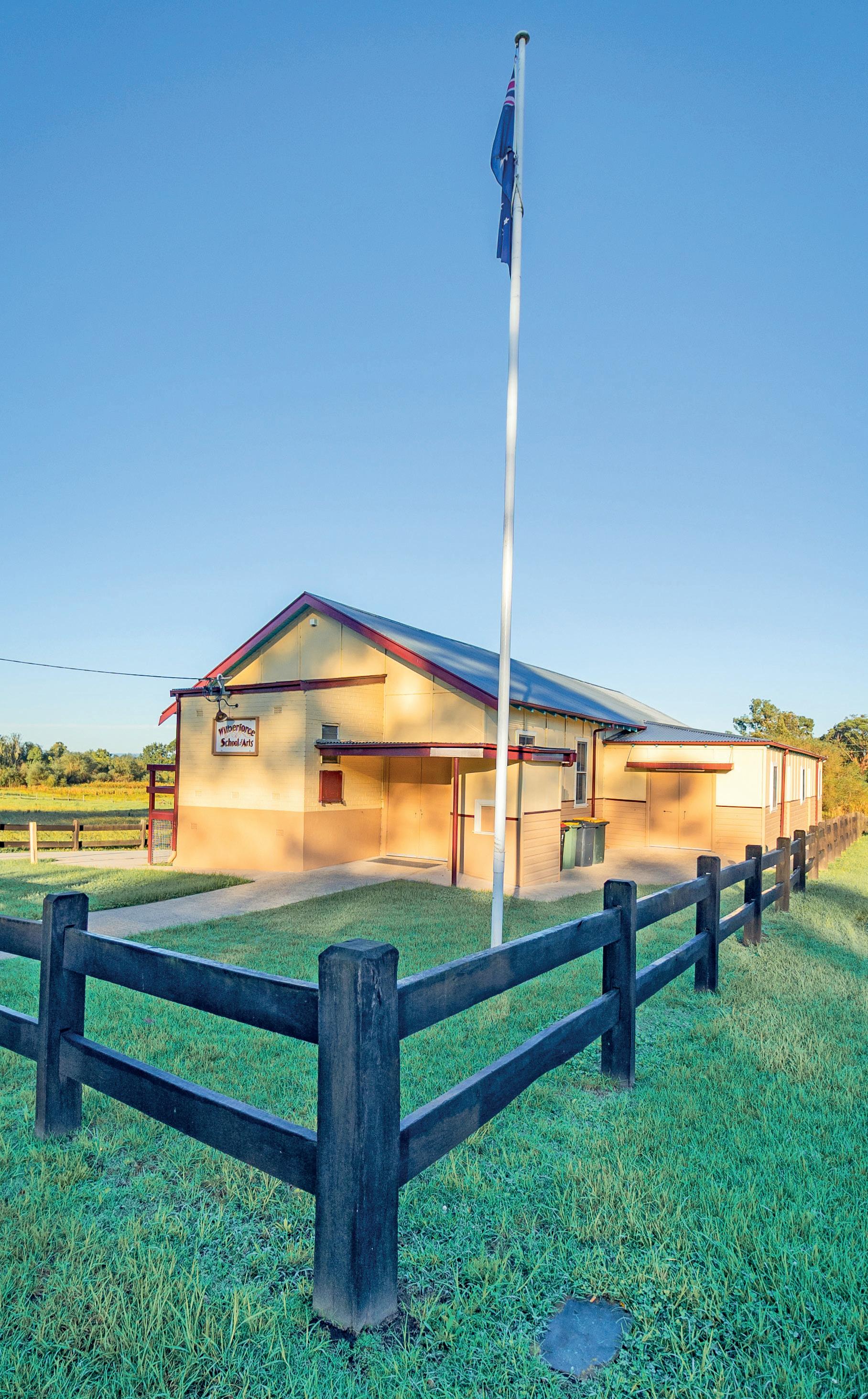
efforts to save the building from demolition over 25 years ago. “It’s now the best-appointed hall in the district.” The hall has hosted countless events, from weddings and birthday parties to community meetings and reunions. It has even served as a hub for helping people in need, especially after the 2019 fires.
The Wilberforce School of Arts, built as a community hall, has a rich history of community involvement and support. It was constructed in 1925 and later expanded to include a commemorative room for First World War veterans. This building, with its tasteful and unadorned architecture, stands as a symbol of Hawkesbury’s heritage and community spirit.
Despite the change in management, Neville remains hopeful. “Council is taking over seamlessly,” he said. “We just hope they maintain the same level of care that we did.” His commitment to the hall is rooted in a deep sense of community service, a value that has driven him to volunteer at the School of Arts and the Rural Fire Service.
The role of volunteers in managing the Wilberforce School of Arts was well organised. “We had a roster system for
maintenance,” Neville explained. “It should take a month around that’s at a time, you know. So in that it was just putting out the garbage, cleaning the hall, cleaning the toilets, and making sure the papers were there. It was just general maintenance.” The hall was always in top condition for the community to use, Neville said.[1]
However, as the cost of living pressures and time weigh heavily on families today, Neville spoke about the challenges of maintaining volunteer interest and participation. “There’s no one new coming in. Nobody wants to do it,” he said. “You know, volunteerism is these days, it’s knocked on the head. You very rarely get volunteers to do anything. I’m in the rural fire service as well. We struggle to get people for many reasons, particularly financial situations and things like that. People just haven’t got that time, or it’s not in their ethos to volunteer anymore.”
Neville’s connection to the Wilberforce School of Arts is deeply personal. He moved to the Hawkesbury over 30 years ago with his wife, a local girl. “My wife’s wake was in there,” he shared, his voice trembling. “It’s a special place for me and my family.” This personal connection underscores the emotional significance of the hall for many in the community.
“It’s there for the community,” Neville emphasised. “It’s not there to sit as a glorified piece of building. It’s there to be used and enjoyed by everyone.”
As Neville reflected on his years of service, he expressed a sense of fulfilment and pride. “We did what we did,” he said. “We just hope people are happy with it.”

By Eddie Dogramaci
As an independent Councillor, I assert that our Council is no longer a viable business entity. The Councillors entrusted to represent and care for you have let you down.
Your cash, meant for food, school fees, and medicine, is being drained. The Council communicates through glossy magazines and curated Facebook posts, concealing inconvenient truths. This $32.5 million loan to balance the budget is akin to paying off one credit card with another. The interest will be repaid by your children and grandchildren for the next 20 years.
Your trusted Labor and Liberal party representatives have not once questioned these costs.
Your $120 million in rates should be spent on repairing roads, maintaining curbs, caring for the elderly and homeless, preserving heritage buildings, feeding the hungry, and supporting our vulnerable veterans and families in desperate need of assistance. Instead, this horrendous amount has been wasted. I don’t see anything amusing when they walk into the chamber smiling unless we have clowns in this circus.
The saying goes, “horses for courses.” You wouldn’t bet on a donkey in the Melbourne Cup, nor would you let someone with a bicycle license steer a cruise liner. If you complain to them about a hot day, they will tell you that “they put the sun up there.” That’s how arrogant they are.
The cost blowout on the Windsor sewer repair forced our Council to take out a $32.5 million loan. This directly impacts you, the ratepayers, who now face a 14% increase in Council rates to repay this loan. Despite efforts to silence me, I exposed the truth. In the first year alone, the interest was a staggering $1.9 million.
Local Council elections should not be confused with state elections. Major party candidates exploit this, deceiving you into believing that Councillors have legislative power—NO, we only manage your $120 million for the welfare of the ratepayers. Yet those with no professional business experience have been running the Council like their farm, spending our money without accountability. I promise to work to bring rates down,
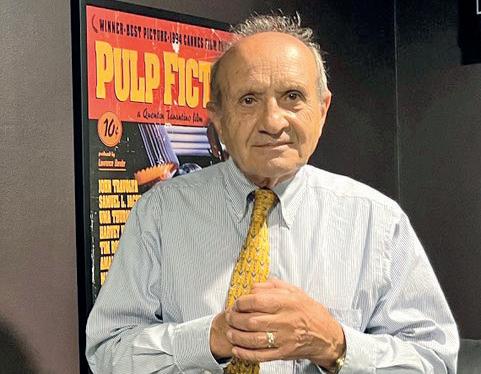
fix the roads, and hire local tradies. Development Applications languish for months, even years, while management prioritises replacing pathways with trees and parking spots with flower beds, punishing small business owners who rely on customer access.
Major party Councillors have tried every trick to remove me, the only businessperson, the most trusted independent. They attempted to silence me because I exposed their questionable
decisions and frivolous lies. They aimed to terminate my post for exposing their financial missteps.
On September 14th, you will be the judges. They wasted $40 million on a project that our engineers, welders, and plumbers valued at $2.7 million. For the first time in the history of Hawkesbury, on September 14th, you have the chance to save our community. Make your vote count and vote for Eddie Dogramachi.
Sponsored content
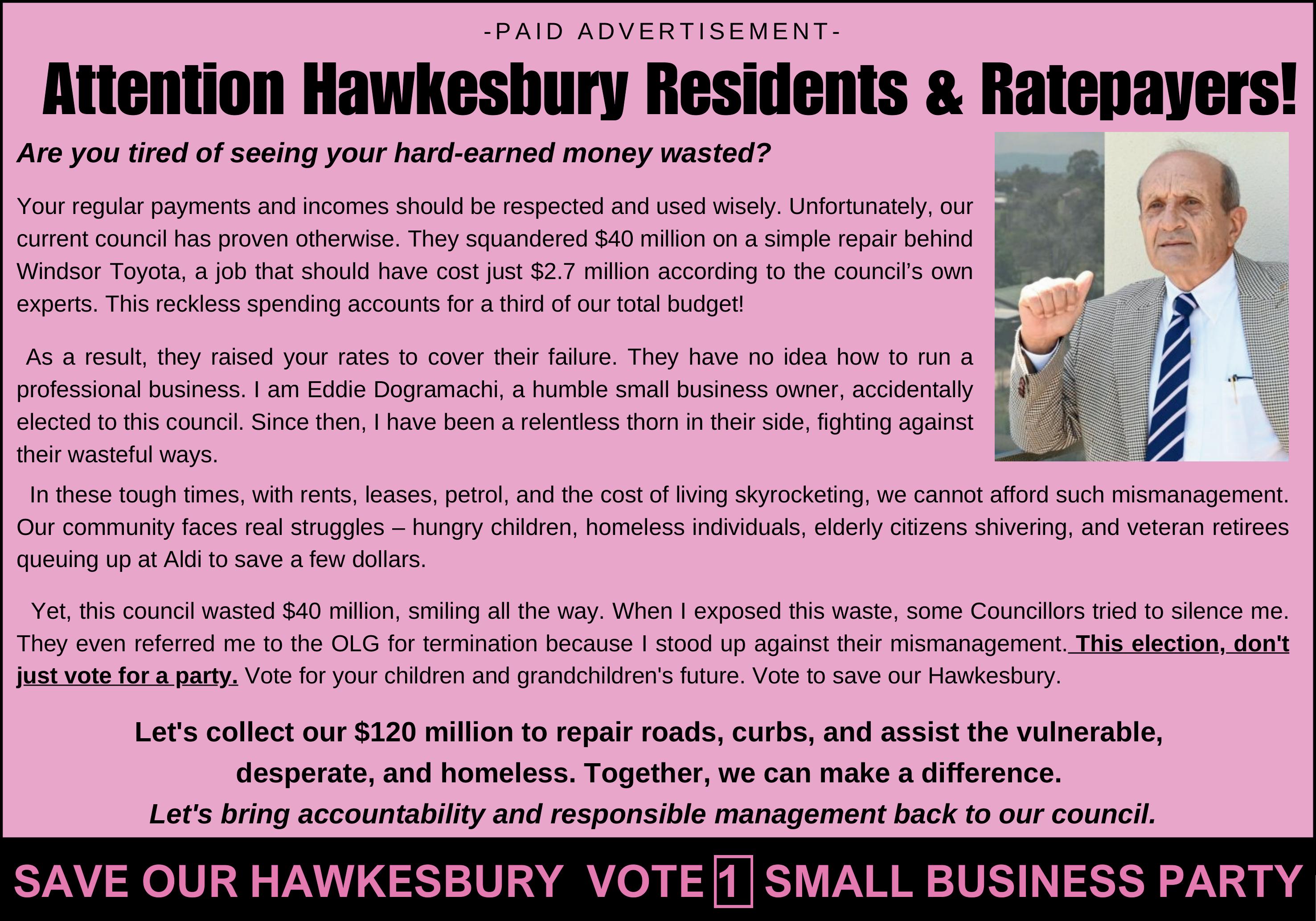

This unprecedented and comprehensive study offers invaluable insights into future flood risks for Communities from Wallacia to Penrith, Windsor, and the Lower Hawkesbury. It is the most detailed flood study of the area ever conducted and incorporates the potential impacts of climate change for the first time. The findings are unequivocal: increased rainfall due to climate change will lead to significant surges in flood levels, fundamentally altering the nature of flood events in the region.
“Projected future increases in rainfall intensity and sea level would produce a notable increase in flood risk across all sections of the study area, including increases in 1 in 100 AEP flood levels of more than 1 metre between Gunderman and Windsor under certain climate change scenarios,” the report said.
The data presents a clear and alarming picture for various areas along the Hawkesbury and Nepean Rivers, demonstrating how even modest increases in rainfall can result in substantial rises in flood levels.
Wallacia, upstream of Windsor, is a stark example. Smaller floods already create a “bathtub” effect where water accumulates behind a downstream gorge. This natural quirk of geography turns minor flood events into significant threats. While the Wallacia floodplain is not sensitive to sea level rise, it is influenced by potential changes in rainfall intensity, the report said. Climate change modelling indicates that a 9.5% increase in rainfall could raise peak water levels by 1.4 metres during a 1 in 100 Annual Exceedance Probability (AEP) event. If rainfall were to increase
The 2024 Hawkesbury Nepean River Flood Study by the Reconstruction Authority has revealed a sobering reality: climate change will dramatically worsen flooding along the Hawkesbury-Nepean Rivers.
by 19.7%, those levels could rise by 2.9 metres, and under more extreme conditions, peak water levels could soar by up to 4.2 metres for a 1 in 500 AEP event with a 19.7% increase in rainfall.
“Based on this assessment, a future 1 in 100 AEP event peak water level would be higher than the existing 1 in 200 AEP event,” the report said.
A 1 in a 100 flood event means a 1% chance of that sized flood event occurring in any given year. However, several of those events could happen in quick succession or not at all for many years. Penrith, another critical area along the floodplain, faces similar challenges. This region, stretching from the M4 Motorway to Penrith Lakes, is highly sensitive to rainfall changes. The study reveals that a 9.5% increase in rainfall could elevate flood levels by 0.4 metres at Victoria Bridge, while a 19.7% increase could result in a 0.6-metre rise in the 1 in 100 AEP. “Based on these increases, under the higher 19.7% increase in rainfall, an existing 1 in 200 AEP event would be roughly equivalent to a 1 in 100 AEP event under climate change,” the report found.
In Windsor and South Creek, the
situation is further complicated by large floodplain storage and downstream constrictions. Changes in rainfall intensities significantly impact this area, but sea level rises are not a significant factor. A 9.5% increase in rainfall combined with a 0.4-metre sea level rise could raise 1 in 100 AEP flood levels by 0.9 metres. Under more extreme scenarios, with a 19.7% increase in rainfall and a 0.9-metre sea level rise, flood levels could surge by 1.9 metres. This shift implies that what is currently considered a rare 1 in 200 AEP event could become more common than today’s 1 in 100 AEP events, drastically altering the risk landscape. Further downstream, the Lower Hawkesbury River, characterised by its narrow sandstone gorge, faces some of the most dramatic flooding risks. During significant flood events, water depths can exceed 10 metres, with currents moving faster than 2 metres per second. In extreme scenarios, depths could surpass 30 metres, and velocities could reach 4 metres per second. The study projects that increased rainfall intensity and rising sea levels will substantially elevate flood risks in this
already vulnerable area, transforming the nature of floods from severe to potentially catastrophic.
The most significant flood level increases due to sea level rise occur downstream of the M1 Motorway Bridge, with a 0.9-metre sea level rise causing a 0.9-metre increase in 1 in 100 AEP flood levels at the bridge. Rainfall increases have the most significant impact between Sackville and Wisemans Ferry, extending to Spencer. A 19.7% rainfall increase under a 1 in 100 AEP flood event predicts a 1-metre rise at Wisemans Ferry and a 1.5-metre rise at Lower Portland. Combined sea level rise and rainfall increase would cause significant flood impacts along the Lower Hawkesbury, from a 0.9m rise downstream of the M1 Bridge to nearly 1.5m between Sackville and Gunderman. Under these conditions, a 1 in 200 AEP event would become more frequent than a 1 in 100 AEP event at Colo Junction and Wisemans Ferry.
The study based its analysis on ocean level increases of 0.4 metres by 2050 and 0.9 metres by 2100, as predicted by the NSW Sea Level Rise Policy Statement. Additionally, Australian Rainfall and Runoff Data assessments suggest rainfall intensity could increase by 9.5%by 2090 if greenhouse gas emissions increase to 2040 and then reduce to 2100. If current greenhouse gas emissions increase in the future, rainfall intensities are predicted to increase by 19.7% by 2090. These projections were tested against flood simulations, considering various scenarios of sea level rise and increased rainfall intensity.
2020 assessed seven routes, including one similar to the new route and bridge. According to documents previously obtained by the HP under the GIPA application (Freedom of Information), all proposed routes except the Purple Route would effectively dam the river upstream during major flood events.
“The preliminary results showed that by raising the road crossing, the floodplain would block a significant quantity of flow, necessitating numerous culverts or floodplain bridges to meet flood impact requirements,” the January 2020 report stated. It’s yet to be seen how this large structure will impact floodplain flooding but the route is similar to others assessed in the 2020 report.
A separate report, “The New Richmond Bridge and Traffic Improvements Revised Preferred Option Report dated December 2022 (but relied upon as late as 2023) suggests that the new bridge will alleviate traffic congestion. However, the assumptions in the report appear conservative today with recent planning documents seen by the HP forecasting at least 7,000 additional dwellings planned west of the river in coming years.
“Traffic demand in the study area during peak periods is expected to increase significantly in the coming years, with a forecast 2,000 additional dwellings west of the Hawkesbury River, which will further increase congestion and travel times,” the 2022 report stated. “The new bridge and associated road infrastructure upgrades would address
traffic congestion between Richmond and North Richmond, cater for future growth, and improve flood resilience,” the 2022 report said,
The last Community Update on the project website was posted in December 2022, with the latest project update in June 2023. During this update, TfNSW reported collecting traffic data and conducting ground surveys and geotechnical work, which will continue for the next few months. “Our activities include drilling holes and digging pits to test soil and pavement composition. We will also use a barge with a drill rig on the Hawkesbury River,” the June 2023 Project Update stated.
TfNSW has confirmed plans for road widening, wall and mound building, and some land acquisition. Residents have long complained about the lack of consultation on the project. As recently as last month, some residents were unaware of the final route, while others expressed concerns about the project’s impact, particularly on shops in North Richmond, including the North Richmond Post Office, and increased traffic and truck movements in residential streets near Hobartville.
Residents along Southee Road and Inalls Lane will be significantly affected, facing increased noise levels, more inconvenience, and a loss of scenic views without gaining direct benefits. The new main road will be constructed parallel to Southee Road, approximately 35-40 meters from property boundaries, turning the eastern end of Southee Road into a cul-de-sac. Inalls Lane will be widened to accommodate the new road with an

80 km/h speed limit, involving some land acquisition and restrictions on driveway access at the Castlereagh Road end. The project will alter views of paddocks and the Blue Mountains, replacing them with a noise barrier that could be a mound or a wall, ranging from 3.5 to 4.5 meters high. While the century-old Pecan trees along Southee Road are expected to remain, more trees may need to be removed if a mound is chosen over a wall for noise mitigation. Properties within the gaps of the noise barrier will
be outfitted with noise reduction measures like double glazing.
The Federal and NSW governments have pledged a combined $500 million for the New Richmond Bridge. However, some are now questioning whether this will be sufficient to fund the project. The former Liberal NSW government announced the new “preferred option” for the bridge in December 2022 after facing significant project delays, community opposition, and inadequate consultation.
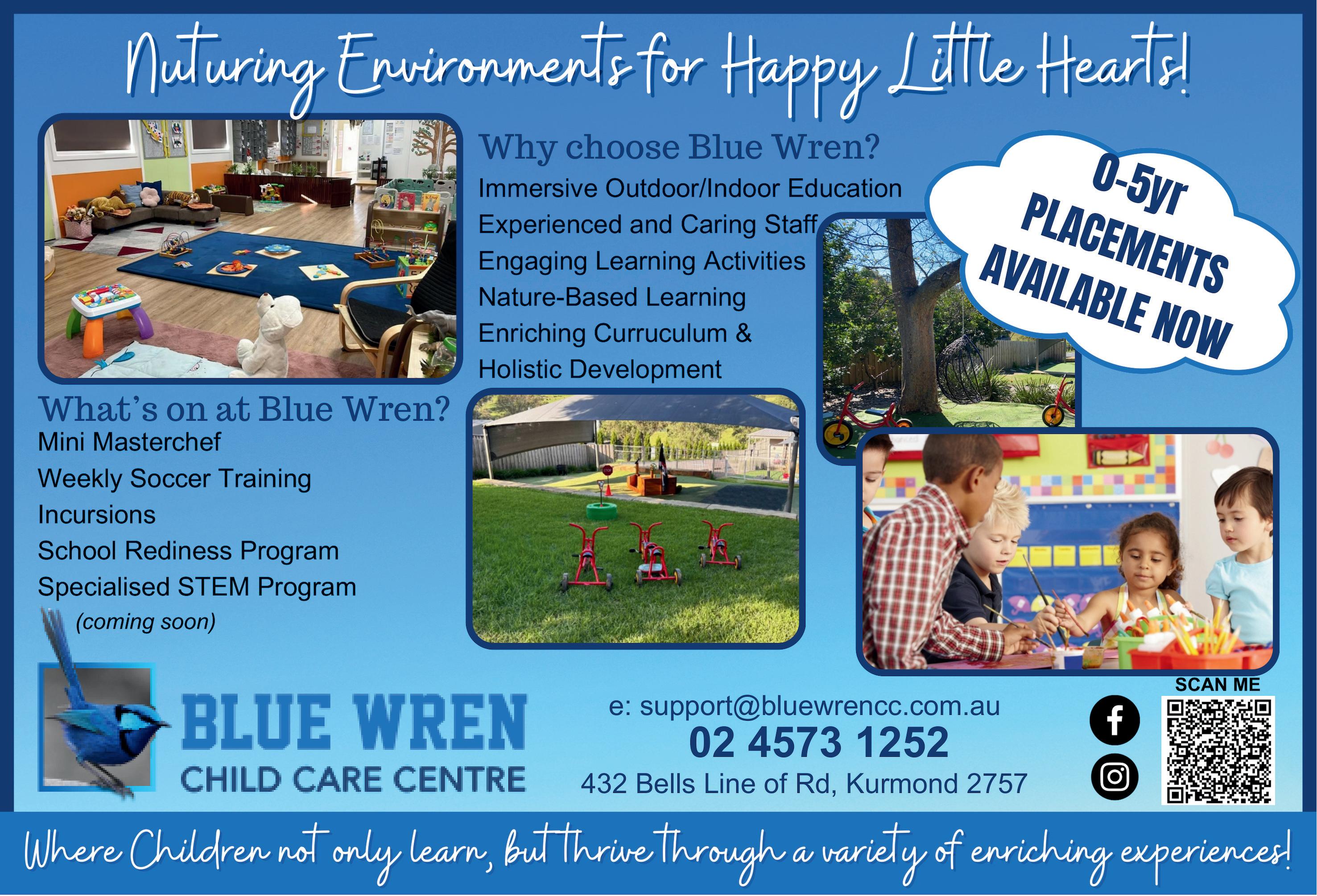
It will be at least another year before the collapsed river levee at Cornwallis is repaired, leaving Cornwallis and Lowlands farmers and property owners at the mercy of floods. The Hawkesbury Council is refusing to disclose the project’s cost or budget. Additionally, the Council has not responded to inquiries about the design of the work or whether the project will reconstruct the land and road to their original state or work around the massive canyon that now exists.
“The tender is yet to be awarded, a contractor has not yet been appointed and as such the cost of the project is not known at this time and the budget remains confidential for probity purposes.”
The NSW Government has spearheaded the design development to restore the drain to its pre-2021-2022 flood functionality. However, despite years of delays and mounting frustrations, the levee remains unrepaired, leaving the Richmond Lowlands community vulnerable to further flooding. Managed by NSW Public Works on behalf of the Council, the project is funded by State and Federal governments under the Disaster Recovery Funding Arrangements. According to an HCC spokesperson, new pre-cast concrete box culverts are being manufactured, and the tender period for restoration works concluded late last month. Construction is slated to begin in September 2024 and take approximately 12 months, depending on weather and river conditions.
“The objective of the project is to restore the prior functioning of the drain, to provide the same degree of flood protection for the Lowlands Community as was present prior to the floods of 2021-2022,” a council spokesperson told the HP. The Richmond Lowlands have endured significant hardship since the Cornwallis drain collapse three years ago. The resulting riverside canyon has exacerbated flooding, causing millions of dollars in damages to local farmers. Turf and livestock farms, once protected from many flood events, have been inundated with water and silt, devastating crops and forcing repeated evacuation of hundreds of animals even at minor flood levels.
“We got all flooded because they haven’t fixed up the hole in the riverbank; it’s ruined our farms again,” Saliba said after the last flood event.
They are frustrated with HCC’s continued delays and lack of transparency. His 350-acre turf farm has been repeatedly damaged, with floodwaters depositing large amounts of silt and mud, resulting in substantial financial losses.
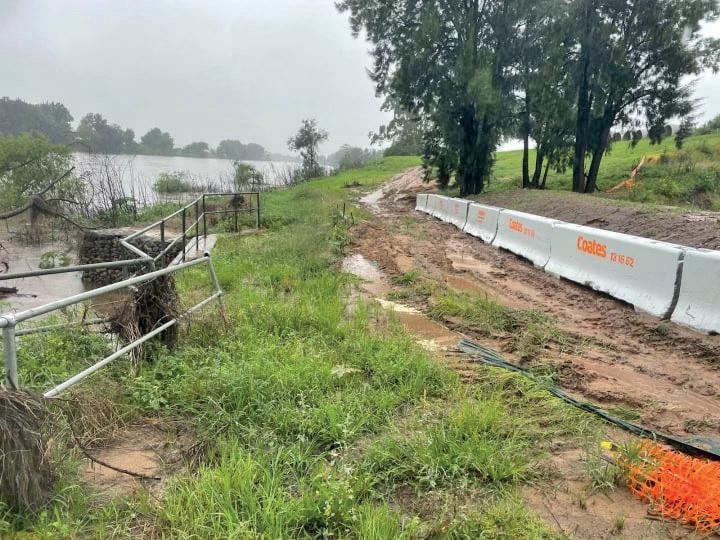
Adding to the community’s frustration, residents warned the Council in early 2022 of the potential disaster if another flood occurred before repairs were made to the then 10-metre hole in the river levee. One reported being “laughed at by a council engineer.” Unfortunately, their warning proved accurate when subsequent floods turned a modest repair job into an environmental catastrophe.
Documents obtainedby the HP under GIPA legislation reveal the Council’s inadequate response to the damaged levee.
In March 2022, with another major flood imminent, the Council hastily rented concrete barriers from Coates Hire, rushing them to the damaged road and levee at Cornwallis a day before the flood hit. However, the 3-meter-long, 800mm-high barriers were no match for the 13-meter floodwaters that rushed into the Lowlands on March 2 and peaked again a week later.
This concrete barriers failed to prevent further damage and highlighted the Council’s lack of preparedness and understanding of the flood’s power. Months later, in June 2022, the Council received a quote for $13,200 to replace the ten concrete barriers that were immediately washed away by the flood. However, internal communications revealed confusion about how to recoup this expense. Council consultant Adam Matthews from Morrison Low emailed staff, stating, “I understand these concrete barriers were on hire to Council, so are not strictly speaking a Council-owned asset. On that basis, I can’t currently see how they could be covered under the DRFA funding program. Current action is for Charles (McEvoy – the former general manager of HCC) to review whether they are covered by Council’s insurance policy.”
The delays in the repair project are further compounded by the involvement of multiple government authorities, including the NSW Reconstruction Authority, Public Works NSW, and Transport for NSW. This bureaucratic complexity has left the project without a clear owner or definitive timeline for completion.


A little more than a month before local council elections, the Liberal Party’s stronghold on the Hawkesbury is set to be tested amid a high-profile domestic dispute involving Mayor Sarah McMahon, thrusting her into national headlines for all the wrong reasons.
McMahon was arrested on July 14 for unlawfully entering her ex-boyfriend Matthew Bennett’s business premises, searching for evidence of him cheating. The next day, she returned to Windsor Police Station with her own domestic violence allegations against Bennett.
The Police Incident Report (PIR) tendered to Windsor Court said that on the evening of July 14, McMahon, suspecting Bennett of cheating, scoured the Hawkesbury for him, visiting his mother’s house, sister’s house, a friend’s house, and ultimately Bennett’s business premises at 286 Windsor Street, Richmond.
Once inside she accessed his computer and sent a photo to Bennett. Realising she was in his premises, Bennett remotely accessed his security camera and called the police. McMahon was arrested, placed in a police vehicle, and later served with an AVO.
On July 15, McMahon returned to Windsor Police Station, accusing Bennett of a string of domestic violence offenses over a number of years, including knocking her off her feet and smashing furniture in their home.
McMahon alleges that at their home in 2023, Bennett swung a Nike bag at her, causing her to fall and injure her thigh. She states that Bennett then told her to “get up and stop faking it.”
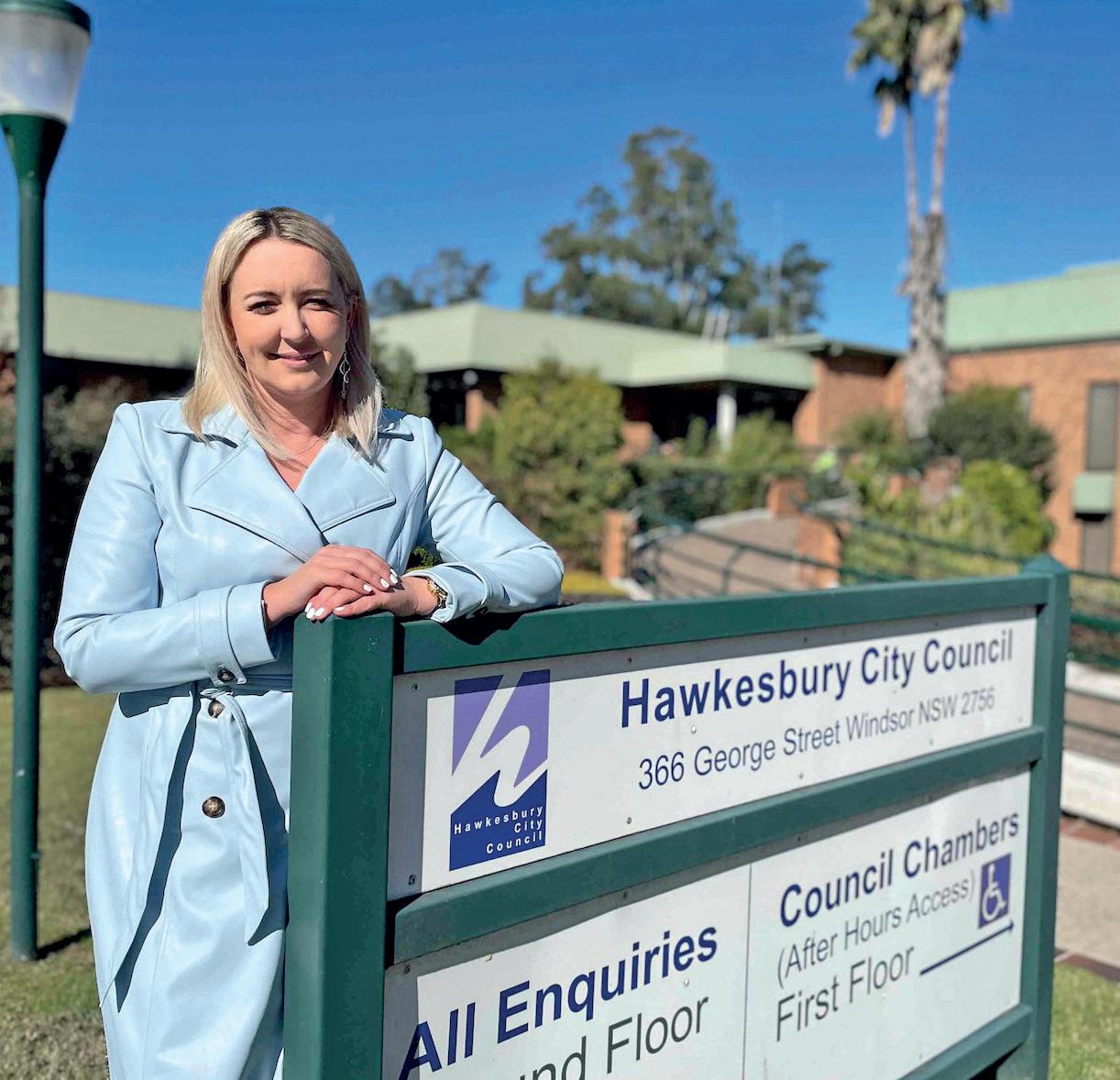
McMahon further claims that Bennett pinned her to a bed while yelling at her and caused over $1000 worth of damage to their shared home. In June 2024, McMahon claimed Bennett threw a glass
A motion of no confidence in Hawkesbury Mayor Sarah McMahon was raised at the first Council meeting since media reports about the Mayor were published last week.
However the motion was blocked by Deputy Mayor Barry Calvert which stopped any debate about the matter.
Councillor Eddie Dogramachi moved the motion, stating, “This Chamber has lost confidence in the Mayor. They have lost confidence in her position, and she should resign.”
The motion followed media reports about the Mayor last week. Had it been successful it would have allowed debate about whether the Mayor, in this instance, has the support of the Chamber.
“She has lost the ability to focus 100% on her job as the Mayor,” Dogramachi told the meeting.
Mayor McMahon did not attend the monthly meeting, which was subsequently chaired by her colleague, Labor’s Barry Calvert, who has helped form a Liberal/Labor block to secure votes in Council meetings.
Clr. Calvert repeatedly asked Clr. Dogramachi why the matter was “urgent.” If the matter were deemed urgent, it would have been debated.
Clr. Calvert disagreed with Clr. Dogramachi telling him the matter was not urgent.
“That is not the question,” Clr. Calvert told Clr. Dogramachi. “The question is why do you think this is urgent? You can’t convince me this is urgent,” Clr. Calvert said.
Community members expressed their indignation at the events which transpired during the meeting and took to Facebook tonight to voice their opinions.
“It was absolutely disgraceful how he was shut down, bullied by Calvert, and no one backed him! He was just expressing how most of us feel. Extremely dis-

appointing considering other Councillors are much more eloquent and stronger personalities. Now we’ve been droning on about issues that don’t exactly affect us all, if I’m honest. This is a massive issue, and everyone just steps around it!”
Alex Rogers wrote.
Margaret Krakowski added, “The Mayor should stand down. The voters in the Hawkesbury are being treated with little respect, if any.”
“Wtf Barry, get out of the way of justice,” Geoff Bennett wrote.
“Mayor has supposedly taken a leave of absence up until the next Local Government Elections. The council meeting didn’t mention this at all. Eddie put forward a vote of no confidence and was subsequently ridiculed, managed, steered, and schooled by the Deputy Mayor. I have many, many questions,” Sophie Devine wrote.
fear that the defendant (McMahon) will escalate and commit further offenses towards the victim (Bennett),” the police report said. No charges have been laid against Bennett or McMahon in relation to either matter.
Lawyers representing McMahon and Bennett re-appeared at Windsor Local Court on August 1. Both parties had their interim apprehended violence orders (AVOs) against each other extended. McMahon’s AVO will remain in effect until her court appearance on September 19, while Bennett’s extends until his February 6 court date.
The timing could not be worse for McMahon, who was expected to run in the No.1 spot on the Liberal Party ticket in the September 14 local council elections. That now seems doubtful, with insiders questioning the wisdom of her return to a public role. The Mayor has not made a public appearance or attended Council meetings since her arrest.
The Liberal Party, once dominant in the Hawkesbury, has seen its brand diminish. Liberal Party nominations for the Federal seat of Macquarie remain open, suggesting no options or dissatisfaction with current options. McMahon has failed to win Macquarie twice. Before the 2021 election it was the most marginal seat in Australia, today it is a safe Labor seat.
at a wall in the kitchen during a verbal argument, smashing the glass, estimated to be worth $2.
The allegations led to Bennett being served with an interim AVO. “Police
Locally, the Party has struggled amid links to property developers and an unofficial alliance with Labor councillors. Hawkesbury City Council has not disclosed whether McMahon has taken a leave of absence. The Liberal Party has also refused to comment.

Sydney Water announced that a $50 million upgrade at the Riverstone Water Resource Recovery Facility (WRRF) will soon enable biosolids, a wastewater treatment byproduct, to be collected and converted into biochar for use in agriculture and manufacturing.
A recent investigation revealed that biosolids from wastewater treatment plants across Australia are contaminated with PFAS, a toxic chemical linked to cancer. In 2023/24, nearly 25% of monitored treatment plants reported PFAS levels above the restricted use contaminant threshold. Riverstone was among these plants.
Despite this, government agencies maintain that their actions comply with Australian regulations, which are less stringent than US standards. They declare no safe level of PFAS due to its carcinogenic properties.
“The use of biosolids in land applications is highly regulated, and Sydney Water complies with all testing and reporting requirements mandated by the NSW Environment Protection Authority (EPA),” a Sydney Water spokesperson stated. Sydney Water works with regulatory bodies to conduct thorough treatment and risk assessments to ensure they are suitable for use on agricultural land.”
Sydney Water sells wet biosolids to farms for soil mixing, horticulture industries, and parks and gardens, potentially leading to the presence of PFAS in food grown on these lands.
In June, Friends of the Earth Australia reported that PFAS levels in biosolids from wastewater treatment plants, including Riverstone, exceeded safety
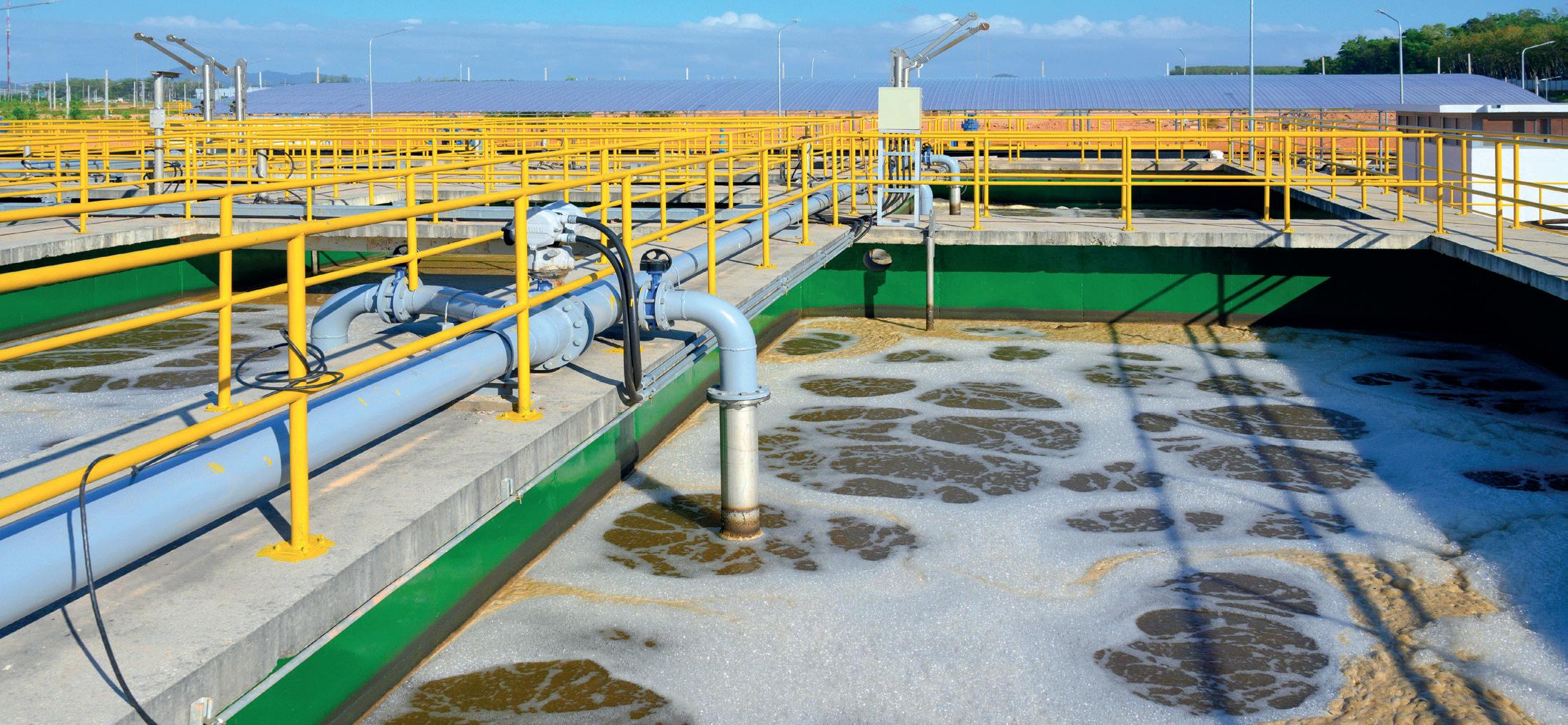
guidelines. Richmond recorded the highest PFAS levels, with Vineyard and Riverstone also among the top ten. Based on information obtained under GIPA, the report found that in 2023/2024, nearly 86% of monitored treatment plants in NSW reported average PFAS levels above the draft National Environment Management Plan’s unrestricted use contaminant threshold. [You can read the report here: https://www.foe.org.au/ sydney_water_and_pfas_chemicals].
Sydney Water has promoted its new initiative, highlighting the benefits of carbonisation technology for treating wastewater byproducts in the North
West Growth Area. Bernard Clancy, Sydney Water’s Head of Major Project Delivery, stated that the upgrade will increase treatment capacity and improve discharge quality into the Hawkesbury-Nepean River system.
“Biochar is an organic charcoal-like product. The process involves thermally treating the organic and inorganic solid material captured in wastewater treatment to remove contaminants such as microplastics, then releasing a clean product back into the environment,” Mr Clancy explained. “It can also enrich soil quality and stimulate crop growth, contributing to sustainable farming practic-
es and a circular economy model.”
With the population in the area expected to double by 2036, these upgrades aim to provide effective wastewater treatment and maintain healthy local waterways. The planned increase in treatment capacity across the North West Hub will support servicing 200,000 new homes by 2056.
While Sydney Water emphasises the new technology’s benefits, concerns about PFAS contamination in biosolids persist. The implications for agriculture and public health remain significant as the debate over the safety and regulation of biosolids continues.
The Hawkesbury is one of just four Local Government Areas (LGAs) that have been exempted from plans to enforce Low and Mid-Rise Housing in LGAs, aimed at boosting the housing supply. Last month, the NSW Department of Planning, Housing, and Infrastructure announced that the area would be excluded from the proposed Low-and Mid-Rise Housing State Environmental Planning Policy (SEPP).
The NSW Government’s contentious planning reforms intend to increase housing density by allowing residential flat buildings of 3-6 storeys, terraces, townhouses, duplexes, and smaller 1-2 storey apartments in suburbs where such developments were previously restricted. The focus is on boosting housing supply near established town centres and train stations.
Hawkesbury Councillors unanimously opposed the proposal, citing critical concerns over flood risk, preservation of local heritage, job losses through lost industrial land and the inadequacy of existing infrastructure to support a significant population increase.
In a statement last month, Hawkesbury Council confirmed it received a letter from the Department, confirming that the LGA area would be exempt from the proposed reforms.
“The Department has made the right decision, and we welcome their thorough consideration of the concerns that we raised,” said Hawkesbury City Mayor Sarah McMahon. “Our town centres are iconic for a reason. We have carefully managed their development and growth over many years to ensure they retain their community feel and heritage values. These reforms would have substantially changed all of that.

“Additionally, after eight floods in four years, it is abundantly clear that a significant increase in population in the Hawkesbury posed an unacceptable risk to current and future residents,” she added.
In a letter to Hawkesbury City Council dated June 28, 2024, Executive Director at the Department of Planning, Housing and Infrastructure Tom Loomes wrote:
“Outside the Hawkesbury LGA, the LMR SEPP will be implemented in
two stages. Stage 1 (commenced July 1, 2024) will permit dual occupancies and semi-detached dwellings in all R2 low-density zones in NSW. This will not apply on certain lands and LGAs, to manage hazards, constraints, and evacuation risks. Four LGAs, including yours, have been excluded due to extensive hazards and constraints that need further consideration.
“Stage 2 (to be notified later in 2024) is for the remainder of the LMR SEPP, which will expand permissibility and introduce non-discretionary standards within the nominated ‘station and town centre precincts’. The same land exclusions introduced in Stage 1 will continue to apply,” he wrote.
After more than two decades of dedicated service, the Kurmond Post Office will close its doors for the last time on Thursday, 26 September. The closure marks the end of an era for the small community of Kurmond and The Slopes, who have come to rely on this local institution.
David Hegarty, the familiar face behind the counter since 2003, has been a pillar of the community, processing parcels, taking bill payments, and passport applications and performing all the essential tasks that Australia Post provides. Many locals fondly recall flicking through his $2 second-hand book collection at the front counter while waiting for their parcels, a small gesture that raised money for cancer research. While others have enjoyed a few moments to catch up with neighbours in the queue.
“I will miss David’s gentle dry humour, and wish him all the best,” said a lady outside the post office. “It will be sad to lose the convenience of having a post office in Kurmond.”
The closure, prompted by Hegarty’s decision to spend more time with family, has left the community worried about future postal services. Most parcels will be rerouted to Kurrajong Post Office, which already faces challenges with long queues and limited space.
Those customers with PO boxes have already been informed by letter. Residents can access other postal services at Kurrajong LPO, North Richmond LPO, or Grose Vale LPO.
However, some have expressed concern about the impact on older people
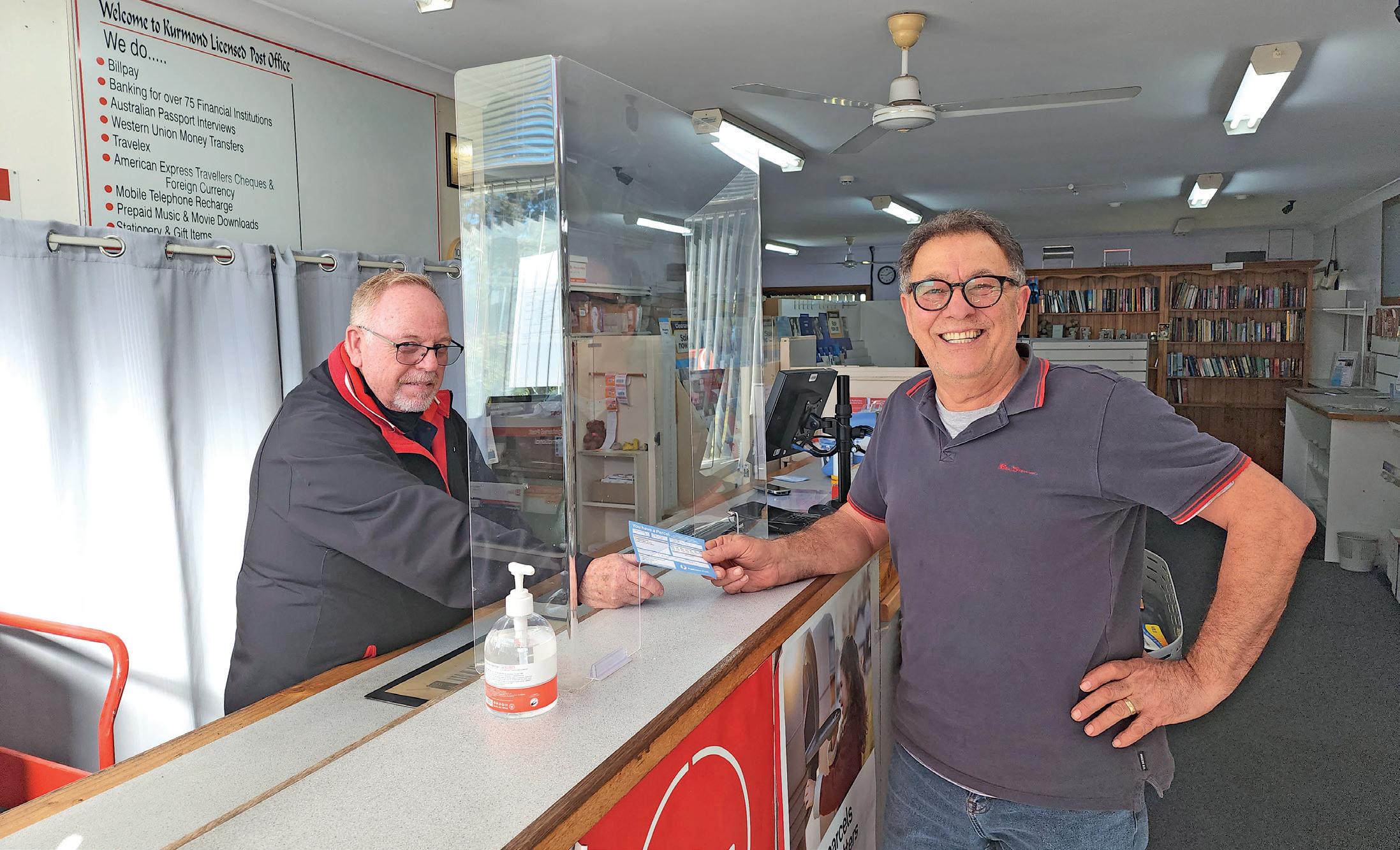
and those without transport, with some calling for Australia Post to consider establishing a parcel locker in Kurmond to maintain a level of service. Those interested in lobbying for this option
can visit Australia Post’s feedback page at https://helpandsupport.auspost.com. au/s/products-and-services or call 13 76 78 (13 POST).
As the community prepares to bid
farewell to their local post office, the closure serves as a timely reminder of the changing face of rural services and the importance local businesses play in fostering community


Between them, Liberal and Labor have held the Mayoralty on Hawkesbury Council for seventeen of the last twenty years, with effective control of the chamber.
Some would say, it shows. Before the Parties got their stranglehold on Council, many people remember the popular mayorship of the late Dr Rex Stubbs, who was a much loved and respected, and more importantly, independent Mayor. I remember when someone in the chamber was being overly self-important, he would simply look over his glasses and smile at you with his eyes, silently letting you in on the unspoken joke. I miss him so.
This term of Council led by two Liberal Mayors, Patrick Conolly and Sarah
McMahon must surely stand out as three years of missed opportunities and disappointment.
Firstly, the entire term has elapsed without a new LEP. Our ‘Local Environmental Plan’ is our main planning policy which shapes the future of our community and ensures development is done appropriately. Our current and antiquated LEP dates to 2012 and is no longer fit for purpose. A new LEP would have introduced a raft of changes including scope for detached dual occupancies and granny flats in more places, and stronger protection for our heritage and the environment.
The previous term of Council finalised work on a modernised LEP and dispatched it to the NSW Government for polishing as one of its last acts in late 2021. The Liberal and Labor bloc, as literally the first thing they did at the beginning of this term when they solidified control of the chamber, was to pull it back for ‘further work’. It hasn’t seen daylight since, which is an abject failure of leadership.
Then the Liberals ensured the passing of the “Rural Boundary Clearing Code”, a disastrous policy that allows the clear felling of trees on properties, including Koala habitat, self-assessed by landowners, and with no monitoring by Council given that no funds were allocated for
This Council has presided over a $32.5 million blowout for the repair of a single sewer pipeline across South Creek. It came within a breath of reneging on a promise to seal Packer Road, a key pledge it linked to the special rate variation that hiked everyone’s rates by a 31.3% starting in 2018.
geospatial tools to track tree cover in the LGA. There is evidence that developers have used this policy to remove vegetation on properties for Subdivision.
Council’s long term financial position is weakening, with an infrastructure backlog running into the tens of millions, meaning our ability to repair roads and maintain facilities will diminish. I predict the next Chamber will confront the unwelcome necessity of another ratehike, hitting ratepayers already struggling with the cost of living.
Lastly, the Liberal and Labor bloc rescinded a measure I had passed which would have reported on Councillor attendance not just at chamber meetings, but workshops, committees and briefings, plus their expenses. I think people expect that kind of accountability and
transparency from their elected representatives.
Ronald Reagan used to say that nappies and governments should be changed regularly, and for the same reason. Independents don’t have a magic wand to fix seventeen years of neglect, but they demonstrably offer leadership which is more engaged, more respectful and more reflective of the community’s aspirations. This is why I ask all Hawkesbury residents to start conversations with their friends about whether, even for those with a rusted-on loyalty to a political brand, they should bench the major parties this time and give some others a go. Nathan Zamprogno is an independent Hawkesbury Councillor and local high school Teacher.
Sponsored Content
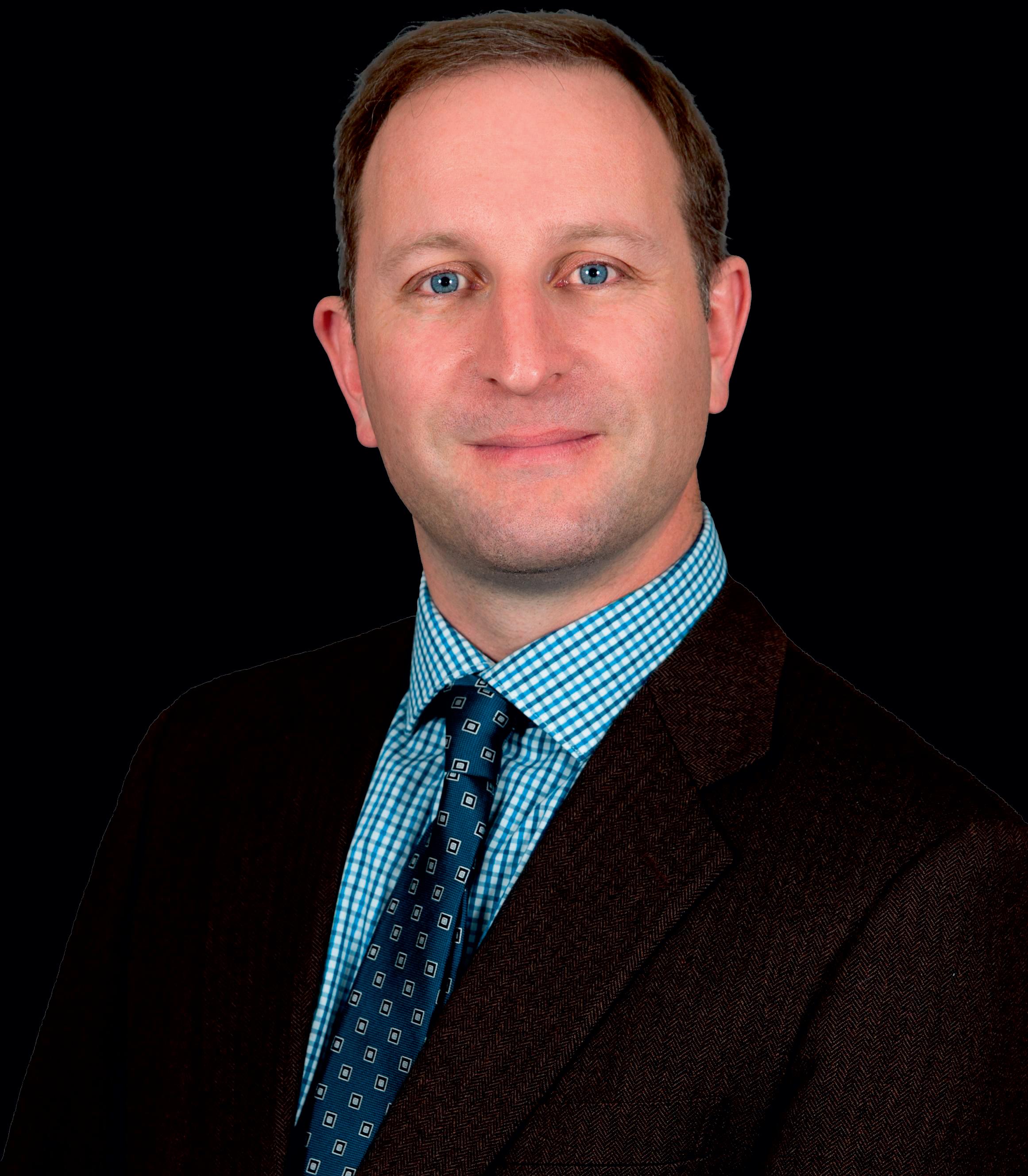



Nominations for the Federal seat of Macquarie remain open as the Liberal Party faces challenges in finding a suitable candidate. According to an internal party document, “Nominations for the following Electoral Divisions remain open and will close on a future date to be determined by the State Executive following the recommendation of the State Director: Macquarie, Cunningham, Sydney, Newcastle, Shortland and Blaxland.”
In contrast, nominations for the nearby seat of Greenway closed at 5 pm on July 17, 2024. The Liberal Party did not respond to questions from the Hawkesbury Post regarding the ongoing nomination process.
A Liberal insider told the Hawkesbury Post, “It is not surprising that the Party has had to make its deadline for nominations open-ended. There are few Liberals left who would have the capacity to take the fight to a formidable opponent like Susan Templeman.”
The insider also highlighted internal issues within the Party, stating: “The actions within the Party have created such a toxic atmosphere that many talented Liberals have either left the party, such as Councillors Brendan Christie, Chris Van Der Kley, and Daniel Myles, all from the Blue Mountains, or they have flatly refused to run on a Liberal ticket, even for something modest like Council.”
The federal seat of Macquarie, which covers the local government areas of Hawkesbury and the Blue Mountains, is currently held by Labor’s Susan Templeman. She secured the seat with a 7 per cent margin in the 2022 federal election, defeating Hawkesbury Councillor, and now Mayor, Sarah McMahon, for the second time since the 2019 election.
The Australian Electoral Commission (AEC) has proposed changes to federal electoral boundaries, expanding the seat of Macquarie to include Emu Plains, Emu Heights, and Leonay, in addition to the existing Blue Mountains and Hawkesbury areas. This redistribution is expected to strengthen the Liberal votes in Macquarie.
In November last year, when asked
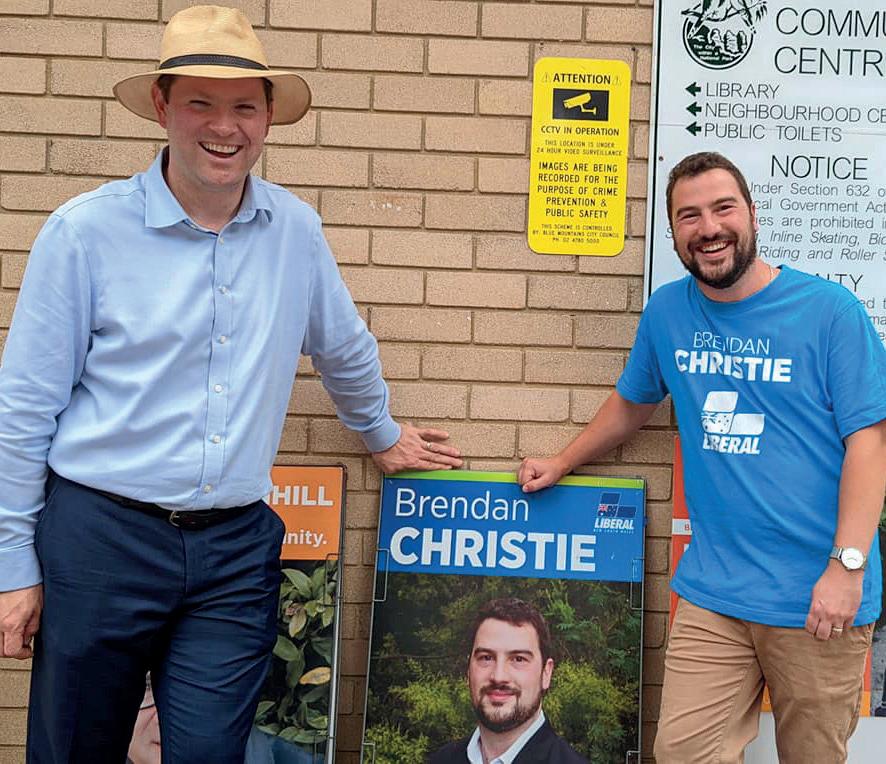
if she would stand for any seat that included the Hawkesbury under the new boundaries, McMahon responded, “Re-
ally unsure how ‘do not ever contact me again’ is misinterpreted by you to mean, hey, keep emailing me! Please stop dis-
Over 100 sites, including 24 early childhood education centers, are alleged to have had their environmental reports falsified by the consulting firm N G Child & Associates. The alleged falsifications span 135 sites across 33 councils in NSW, including the Hawkesbury area.
The New South Wales Environmental Protection Authority (EPA) has launched an investigation into claims that environmental consultant Noel Child falsified sample results in these reports. The affected sites include residential properties, industrial or commercial sites, and undeveloped land. Among these, 24 early childhood education centers and 18 residential properties are currently in operation. However, the EPA assures the public that there are no immediate health risks, with no history of contamination or exposure pathways that could endanger public health.
The alleged falsifications primarily concern contaminated land assessments involving soil, groundwater, surface water, and air sampling. Impacted councils include Hawkesbury City, City of Sydney, Hornsby, Parramatta, Central Coast, Blacktown, and Randwick.
“As the consent authority for developments subject to alleged falsified records

respecting my express wishes and do not contact me ever again. Your behaviour is shocking!”
environmental reports, councils with properties subject to alleged falsified reports have been notified and we will continue to provide them advice and ongoing support. 33 Councils are impacted,” it said.
EPA officers have already inspected 22 of the 24 early childhood education centers, with the remaining two to be inspected shortly. These visits have not altered the EPA’s assessment that there are no immediate risks associated with the alleged falsifications.
As part of the investigation, EPA officers have seized over 10,000 pieces of data and reviewed 2,460 files, with ongoing scrutiny of remaining files to determine the full extent of the alleged falsifications.
All affected councils have been advised to review development applications that included reports from N G Child & Associates.Childcare owners and operators and land developers who have received environmental reports from N G Child & Associates and submitted these as part of a Development Application should contact the relevant local council, the EPA said.
This investigation is separate from the ongoing asbestos in mulch investigation.
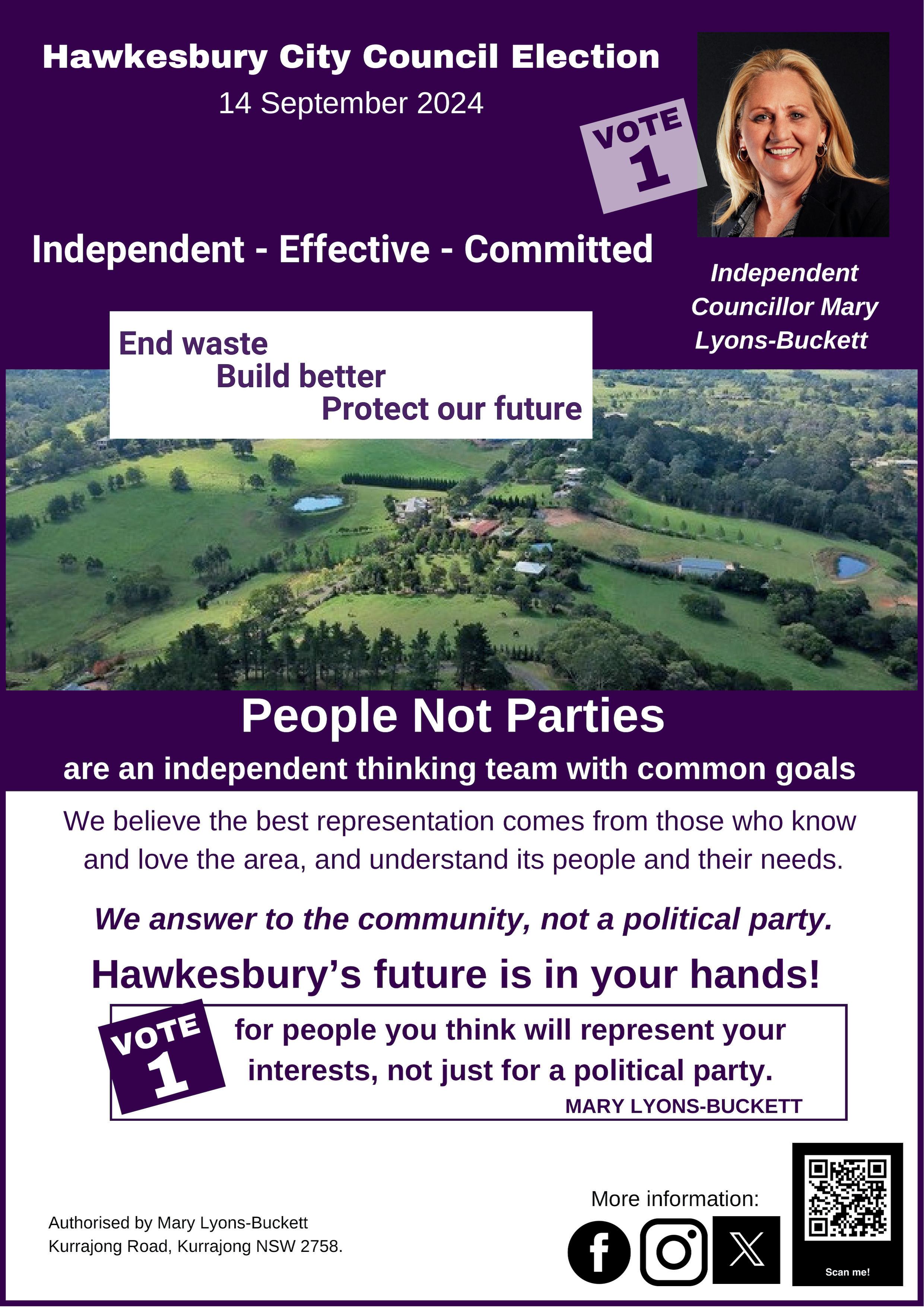
People often say that voting is compulsory in Australia. Strictly speaking, it’s attendance at a polling place which is compulsory. What happens after you get your name marked off isn’t policed. All of us knows a curmudgeon who deliberately never votes “because it only encourages them”.
But there’s a strong argument to making your vote count. If you don’t care enough to cast a considered vote, don’t complain about the people that end up getting elected! Something about that old phrase about lazy voters getting the government they deserve.
The next Local Government elections will be held state-wide on Saturday 14th of September, including for Hawkesbury City Council.
Those turning 18 and recently eligible to vote are reminded automatically to enrol if they have a driver’s licence. People seeking to verify their enrolment
or to confirm a change of address have until August 5 through the Electoral Commission website at aec.gov.au. This is the deadline if they want to vote in these Council elections.
But what then? How do you maximise your vote to elect the right people?
Hawkesbury Council is unusual by not having “wards”. Where other council areas are divided into regions and candidates only represent their area, Hawkesbury’s twelve councillors represent the whole city and need support from across it’s 2,800 square kilometres and its 38,349 voters (at 2021). This means a “quota” to get elected is 1/12 of that, or around 3200 votes.
One interesting trend is the increasing proportion of people who vote before polling day at pre-poll locations (likely to be in Windsor and Richmond) or through postal votes. 29% of voters
did so at the last election. The ill-fated on-line iVote system added a further 16% but has been discontinued due to security flaws.
Pre-polling opens for one week starting Saturday September 7th. No one polices whether you’ve got a valid reason to need to vote early.
Councils are elected under a preferential system. Groups of candidates can be voted for by numbering above the line, or individual candidates can be selected by numbering squares belowthe line, and here’s where your choices determine your voting power.
Both Liberal and LaborHow-to-votes at the last election directed people to number “1” above the line for them and then stop. But you’re not electing just a few people from one party, you’re electing a chamber of twelve. To be clear, just “1” above the line, or as few as six numbered squares below the line are
legal votes, but your vote “extinguishes” early and doesn’t go on to elect any other candidates. What a waste!
For your vote to have the greatest potency, you should either number all the squares above the line (in 2021 there were only twelve tickets), or number way more than six squares below the line. Twenty would be a good number, and more would be better still. This means that your vote can “skip over” candidates already elected or excluded and help elect people down the ballot, instead of fizzing out.
If you like a party but perhaps don’t like one of their candidates, vote below the line and just avoid that candidate! Remember, your preferences belong to you, so use them.
Remember, the Government serves the people, and democracy is both a right and a duty.
Superintendent Karen Hodges, a pillar of the NSW Rural Fire Service (RFS)–Hawkesbury District, has retired after an extraordinary 35-year career. Hodges was farewelled last month at an event at the Richmond Club, which celebrated her distinguished service and leadership.
Several historic milestones mark Hodges’ career. She was the youngest and first female to attain the ranks of Inspector and Superintendent within the NSW RFS. Her tenure is also distinguished by her extensive experience as a Section 44 Incident Controller, where she handled some of the region’s most challenging emergencies.
Her departure from the NSW RFS comes as she prepares to take on a new role as Deputy Chief Officer with the Rural Fire Service Queensland (RFSQ). This move marks a significant step in her career, and her expertise and leadership will be a valuable asset to the RFSQ.
In her 35 years with the NSW RFS, Hodges served as a volunteer and a career member, dedicating years of service to the community, a legacy that will continue to inspire future generations of firefighters.
“Thanks again, Karen, for all you’ve done and achieved with the NSW Rural Fire Service, as both a volunteer and career member, especially for the members and communities across the Hawkesbury,” Former Commissioner of the NSW Rural Fire Service Shane Fitzsimmons said.
“You’ll certainly be missed by all in the Hawkesbury and many further afield, but will be a most welcome addition to the RFSQ team,” he said.

During a special tribute at last month’s meeting of Hawkesbury City Council, Councillor Danielle Wheeler expressed her admiration for Hodges, acknowledging the impact of her career.
“Many of us, as Craig said, are really sad to see Karen go, but very pleased that she’s moving on to a newly created role in a newly created organisation. It’s
Riverside Gardens is a boutique retirement village offering stylish residences within a safe, independent living community.
Established in 2010, Riverside Gardens consists of 2 and 3 bedroom villas and apartments nestled amongst established gardens and tree lined streets.
On a daily basis, the community centre is a hive of activity and a beautiful space for residents to socialise and enjoy.
Riverside Gardens is conveniently located within walking distance of North Richmond shops, cafes, and endless recreation.

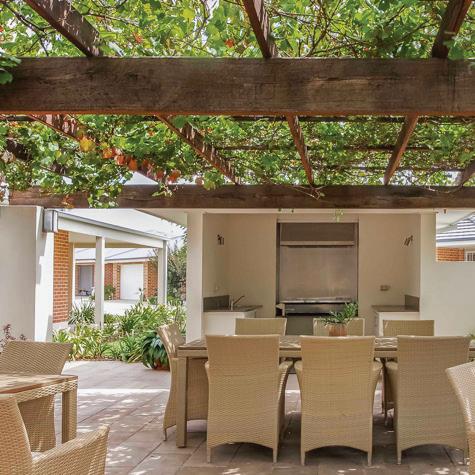
a fantastic opportunity for someone who has been a leader since her very first move across from Council’s typing pool. It’s a meteoric rise to one of the most respected operators in the New South Wales RFS.”
Wheeler highlighted the difficulty of the job and Hodges’ exceptional capacity for empathy. “This is a really tough
job. Everybody thinks they would have known what to do in the circumstances. Karen’s enormous capacity for empathy has seen people through their bad times. She has really been a pioneering role model for women, particularly in the Hawkesbury RFS. Karen has been the most extraordinary matriarch of it. She will be greatly missed.”
Wheeler also emphasised Hodges’ personal touch and leadership style. “She’s known for her personal touch. Not many FCOs would send flowers for births or grieving relatives. Karen isn’t just an FCO. She’s a mentor and a friend. Her ability to manage accounts and cajole people into doing things for her is extraordinary. She’s been an amazing leader, constant and reassuring.”
Councillor Nathan Zamprogno also paid tribute to Hodges, reflecting on their long association. “I can only agree with Councillor Wheeler’s sentiment. I’ve known Karen for over 33 years since I arrived at fire control to volunteer in the communications group as a teenager. It was clear even then that she was a rising star. She has never been anything less than a complete diplomat, a complete professional, and a seemingly unflappable person. The professionalism she brought to her role has been very much to our advantage in exceedingly trying times. I wish her every success in her future endeavours.”
Thank you, Superintendent Karen Hodges, for your remarkable journey and all you have achieved with the NSW RFS. You will be missed, but your next chapter with the RFSQ is one we will all follow with pride.

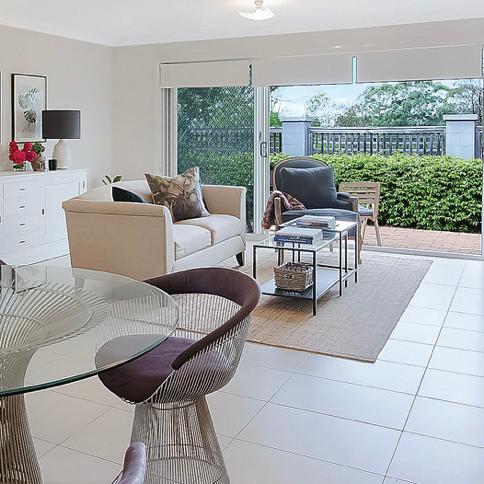
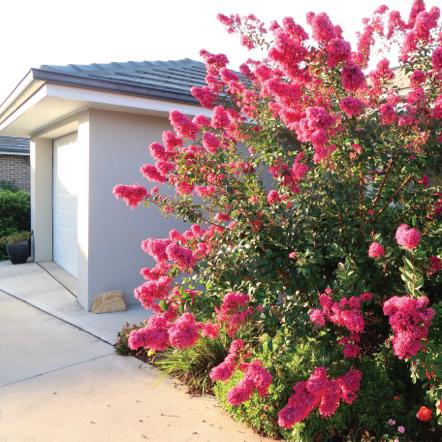

Local families on low incomes are encountering significant barriers in their search for affordable assessments for Attention Deficit Hyperactivity Disorder (ADHD) and autism (also referred to as Autism Spectrum Disorder, or ASD). The region’s lack of specialists forces many caregivers to join multiple waiting lists and travel long distances with their children.
Families able to pay private fees can access assessments close to home with a wait of only around one month, while families unable to pay for private practitioners face an indefinite wait.
In some cases, says Professor Adam Guastella, families are giving up entirely.
Professor Guastella is a clinical psychologist and head of the Clinic for Autism and Neurodevelopmental (CAN) Research at the University of Sydney’s Brain and Mind Centre.
“There is no place where families in the public health system can go,” he says. “Public services have been pressured to reduce waitlists with no real increase in funding, despite massive increase in demand.”
Guastella led a team of researchers to investigate barriers to supports for children and caregivers in two studies published last year. The studies examined data collected between 2019-2023, but the team continues to analyse a registry of information from 7 local health districts, including the Hawkesbury’s service area.
He further explains that while public services may appear to reduce wait times, they have achieved this by restricting the criteria for entry (such age limit). This is only pushing unlucky families out of the queue.
The CAN team’s body of research says that families spend years waiting for an assessment, but for a child to get the best outcomes, assessment ideally
happens at around age 3, or as soon as caregivers express concerns about their child’s development. All sources agree that assessment and reporting should be conducted in time for school start; no later than age 5. Any later is, according to the evidence, unacceptable.
Guastella’s researchers say a key reason for a delayed or absent assessment is financial distress. This is echoed by Berinda Karp, of Autism Step Australia, who is a respected consultant working with clients across Western Sydney.
“Some haven’t got the money to do any of it,” she says. “There are families out there with multiple children; some diagnosed, some undiagnosed. I see single parent families where the parent is struggling enough just caring for their children, let alone generating the income to pay thousands in private fees.”
She adds, “Paediatricians have an average 12-18 month waitlist. Without early interventions at school start, you have lost years of that child’s learning. These losses can’t be ‘caught up’ when interventions are introduced. They are forever.”
Erica Dilworth, from Advance Disability Services & Respite, has been instrumental in establishing the Hawkesbury Disability Network this year, and, like Berinda Karp, highlights the need for more funded services in the Hawkesbury.
“Many families are going to Blacktown or Nepean Hospitals for care; why not Hawkesbury? It tends to be forgotten. It’s not far from major hubs like Penrith or the Hills, yet some providers won’t travel that little bit further. The families are crying out for help!”
Hawkesbury Disability Network provider members are discussing ways in which they can assist Hawkesbury families to access affordable assessments. Ms Dilworth’s advocacy echoes
that of Royal Australian College of General Practitioners (RACGP) president Dr Nicole Higgins, who describes the situation as a “postcode lottery” for those seeking assessment and medication for ADHD.
Sariah Scott (pictured, left) is Clinic Director of Succeed Psychology, a private practice with offices in Richmond and Kellyville. She offers insight into the process.
“We have a number of psychologists who work extensively with neurodivergent populations including ASD and ADHD,” she says. “In Richmond we have Emily, who works extensively with children. Jordan (pictured, right), Karen and Lisa work across the lifespan.”
She explains, “Diagnosis and treatment of ADHD and ASD is quite unique in that there are a number of people who may be involved at different points. Typically, diagnosis is conducted by a clinical psychologist or developmental paediatrician for children. NDIS only accept diagnoses from clinical psychologists, which puts further strain on the workforce of psychologists. For adults it can be conducted by a psychologist or psychiatrist. Best practice literature supports use of a thorough psychometric assessment battery to rule out differential diagnoses.”
In other words, a thorough assessment is not done in haste, or with generalist training. A key skill of the diagnostician is the composition of a report, which is the family’s key to critical supports, such as NDIS funding. However, despite many Australians experiencing ADHD as a disabling condition, ADHD diagnosis generally does not qualify an individual for NDIS support. For others, there is hope; particularly if the report is written well.
Sariah Scott explains, “A good diagnostic report will have recommendations for adaptations needed to their
education plan, interventions that can be covered by a psychologist, examples of routines that could be adopted, suggestions of social and sporting activities to consider to assist with their challenges, and so on. Sharing these recommendations with anyone who has care of the child (teachers, tutors, grandparents) can assist by allowing everyone to get on the same page in terms of the support and understanding needed.”
All agree that early intervention is critical for children. Professor Guastella’s research highlights the severity of disadvantage experienced by vulnerable families, and that policy and funding should be commensurate with this disadvantage.
For adults, the landscape is nuanced.
“There are certainly pros and cons to diagnosis as an adult, whereas for a child I feel it is somewhat essential,” says Sariah Scott. “Adults may feel a relief to understand themselves better and remove the judgement or stigma they felt was misattributed to them over their lifespan. Some may find specialised treatment from a psychologist, or medication management to assist them to lead far more productive lives. On the other hand, some may feel labelled and therefore limited by their diagnosis. We like to discuss these issues with clients before embarking on the assessment process, so we and they are aware of the potentials for benefit and harm at the conclusion of the process.”
The Hawkesbury Disability Network hosts the Hawkesbury Disability Expo on August 28 at Hawkesbury Race Club, Clarendon, and will be planning “Coffee and Connect” meetings for families. Its meetings are open to local disability service providers.
You can find out more about the Hawkesbury Disability Network and its activities by emailing Erica Dilworth: erica@advancedisability.com.au









In a groundbreaking move to address the growing homelessness crisis among older women, the Older Women’s Network (OWN) in the Blue Mountains has launched the Homes for Older Women (HOW) initiative. This program matches homeowners with spare rooms or granny flats to women seeking affordable accommodation and is set to expand into the Hawkesbury region following an offer from a Kurrajong property owner.
In May, the Federal Member for Macquarie, Susan Templeman, and Member for the Blue Mountains, Trish Doyle, officially launched the program. Already, more than 110 prospective tenants and property owners have expressed interest.
The Hawkesbury Post spoke with Bronwen Johnston of the Blue Mountains branch of OWN to learn about the HOW program. “The Housing Program is an initiative of the Blue Mountains chapter of OWN,” explains Bronwen. She emphasised the cost-effectiveness of using existing properties over building new ones. “We have so many properties, granny flats, and rooms available here. This is a faster solution and much more cost-effective.”
Member for Macquarie Susan Templeman added: “The Albanese Government is investing $32 billion to tackle housing shortages. But increasing supply doesn’t happen overnight. That’s why I support this program, because it can, overnight, provide a roof over the head of an older woman.”
Templeman noted the urgency of the issue: “Women over 55 are the fastest growing group experiencing homelessness, due to rising rents, domestic violence, and cost of living, combined with lower savings and superannuation.”
Bronwen also highlighted the vulnerability of older women: “The Mercy Foundation estimates there are 7000 homeless women nationally at any one time, rising at an alarming rate, especially in the over-55 category.”
The Homes for Older Women initiative connects women in need with home-
owners who have space to spare. Funded by a $60,000 grant from The Mercy Foundation, the program has enabled a small team to set it up, including a website for home owners and women in need to lodge expressions of interest.
“Our program plans to place 20 to 30 women in homes this year,” Johnston states. “We think that’s a pretty good return on investment, considering the program’s current cost of $70,000 to $80,000 to run.”
Although the initiative is not officially launched in the Hawkesbury, it’s gaining traction. A homeowner in Kurrajong has expressed interest, indicating potential expansion in the region. According to the Hawkesbury Demographics Study, there is a similar need for affordable accommodation for older women in the Hawkesbury.
Bronwen explained that OWN isn’t yet able to take expressions of interest from Hawkesbury women who need accommodation but welcomes interest from property owners. “If anyone in the Hawkesbury has pet-friendly self-contained cottages or granny flats they can rent, we would love to hear from them.”
The success of this initiative relies heavily on community involvement. Homeowners with spare rooms, granny flats, or self-contained units are encouraged to consider opening their doors to women in need.
Interested property owners can register on the OWN website. For those inspired to do more, there’s an opportunity to establish an Older Women’s Network branch in Hawkesbury. Interested women can contact the NSW head office to express their interest.
Susan Templeman confirmed her support for the program, saying: “I’ll continue to encourage people who have secure and unused homes or rooms to consider becoming involved in the HOW project.”
For more information or to get involved, visit the Older Women’s Network NSW website or call their office at 9519 8044 or info@ownnsw.org.au.

For months, large piles of logs, tree branches, and flood debris under the Richmond Bridge have served as a stark reminder of the April flood that took some by surprise.
The island of debris, visible to commuters crossing the bridge daily, is set to be cleared this month. A spokesperson for Transport for NSW (TfNSW) announced plans to remove the flood debris around North Richmond Bridge in mid-August. There will be no impact on traffic, but barges will be used in the river to transport the collected debris, the spokesperson told the HP.
In April, flooding caused massive amounts of trees, logs, and debris to become trapped around the bridge, damaging the guard rails and pipes, which were, controversially, not lowered before the bridge’s closure. At the time TfNSW explained that the unexpected early spilling of Warragamba Dam caused river levels to rise rapidly, making it unsafe to lower the guard rails. The early spill left many residents scrambling to evacuate livestock and farm equipment before evacuation routes were cut off.
A month later, the scenario was different. The Richmond Bridge closed with flood waters at just 3.15 meters, according to official data from the Bureau of Meteorology. TfNSW was seemingly keen to prevent a repeat of the April flood mistakes, which cost $100,000 to replace the damaged guard rails.
Since 2020, the Richmond Bridge has been closed six times at heights between 7.8 meters and 8.4 meters.


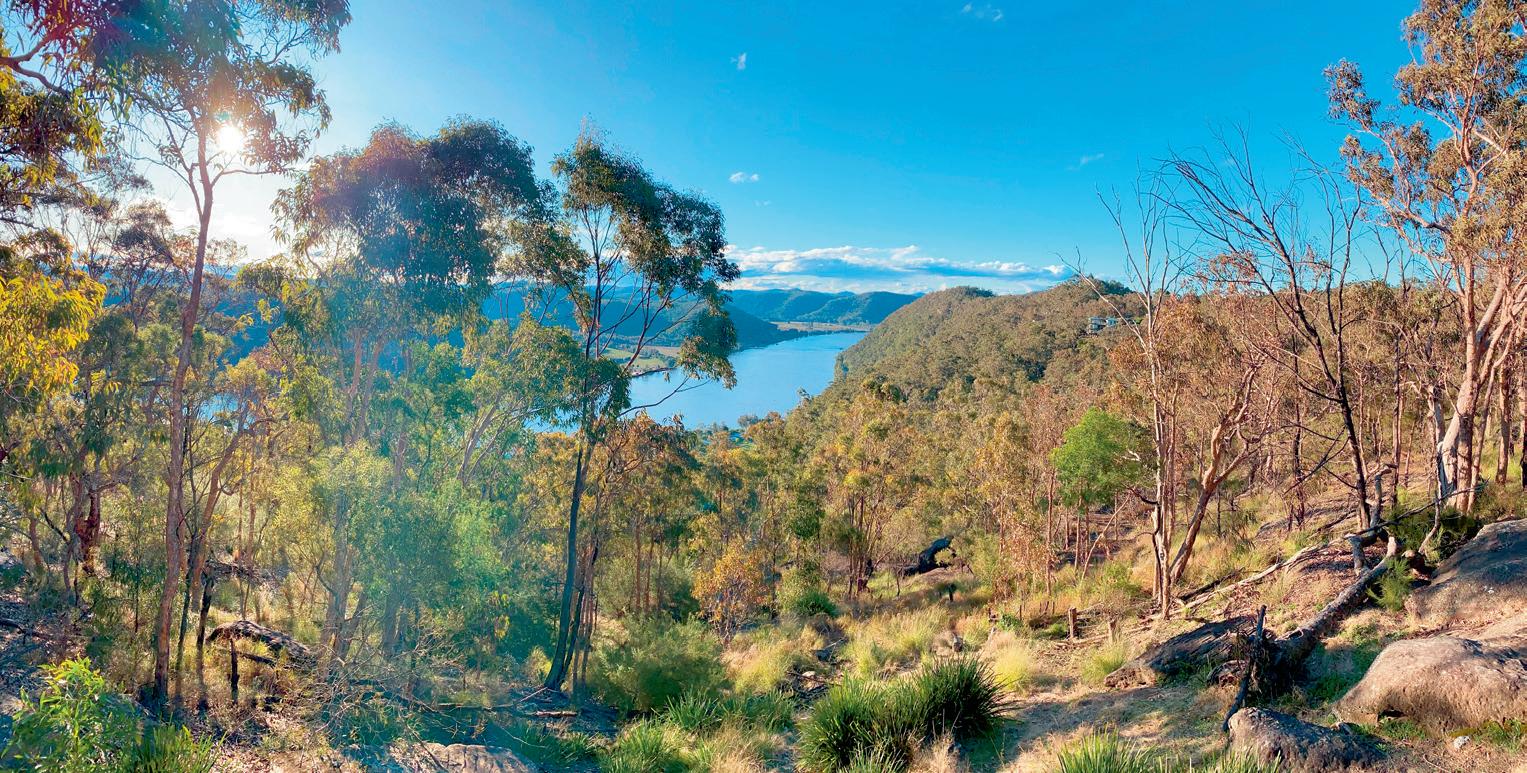

advocate on your behalf to find solutions
offer advice and guidance about Government regulations, services and grants
assist with matters relating to transport, roads, education, health, water, welfare, mental health, veterans, emergency services, housing and Local Government arrange congratulatory messages for significant birthdays and anniversaries
aid in Seniors Card applications and updating your enrolment provide Justice of the Peace services

Residents of the Hawkesbury region, west of the river, now have access to long-hours, non-emergency healthcare with the opening of a new Urgent Care Service in North Richmond.
For years, residents west of the river have voiced concerns about the lack of adequate healthcare services, especially during floods when they become isolated. With no hospital available for the tens of thousands living in this area, access to timely medical care has been a significant issue.
In response, the new Urgent Care Service aims to bridge this gap, offering services 365 days a year from 8 am to 8 pm. Staffed by general practitioners and nurses, the facility is equipped with diagnostic services such as radiology and pathology. However it is not a ‘walk-in’ urgent care clinic. Patients need to make an appointment.
The aim of the initiative is to reduce unnecessary visits to emergency departments (ED) by providing prompt care for conditions that can be treated outside of busy hospital settings.
The service is a collaboration between NSW Health and Wentworth Healthcare, the provider of the Nepean Blue Mountains Primary Health Network (PHN). “We have been working towards this outcome for the Hawkesbury for some time and are pleased to have played our part in providing this service,” said Wentworth Healthcare CEO Lizz Reay. She emphasised the need for an alternative care pathway, especially when GP appointments are hard to secure during weekends and after hours.
Patients can access the North Richmond Urgent Care Service by calling Healthdirect at 1800 022 222A registered nurse will assess the patient’s condition and determine the best care pathway, which
may include an appointment at the Urgent Care Service, a telehealth consultation with virtualKIDS or virtualGP services, or escalation to other services like NSW Ambulance if needed. Healthcare provided at this service is bulk-billed.
Reay also highlighted the importance of maintaining a regular family GP. “Urgent care services fill an important gap, but it’s still important to have a regular family GP. Having a GP who knows your medical history and lifestyle makes it easier to discuss health concerns and allows for better overall and preventative care.”
The NSW Government has committed $124 million over two years to establish 25 Urgent Care Services across the state by mid-2025, with additional support from the Commonwealth Government. This effort is part of a broader strategy to relieve pressure on hospital emergency departments and ensure timely care for NSW residents.
“I welcome the new Urgent Care Service, which will benefit people close to North Richmond and west of the river. It complements the additional free mental health services at the Richmond Head-to-Health and the incentives we’re providing GPs across the Hawkesbury to bulk-bill,” said Federal Member for Macquarie Susan Templeman.
Minister for Health, Ryan Park described the service as “well-supported to treat a range of illnesses and injuries that are urgent but not life-threatening, such as minor wounds, suspected broken bones, and skin infections requiring antibiotics.”
“I’m committed to increasing healthcare availability through urgent care services like this one, which bridge the gap between primary care and emergency care, ensuring patients have fast access to the urgent care they need,” Park said.
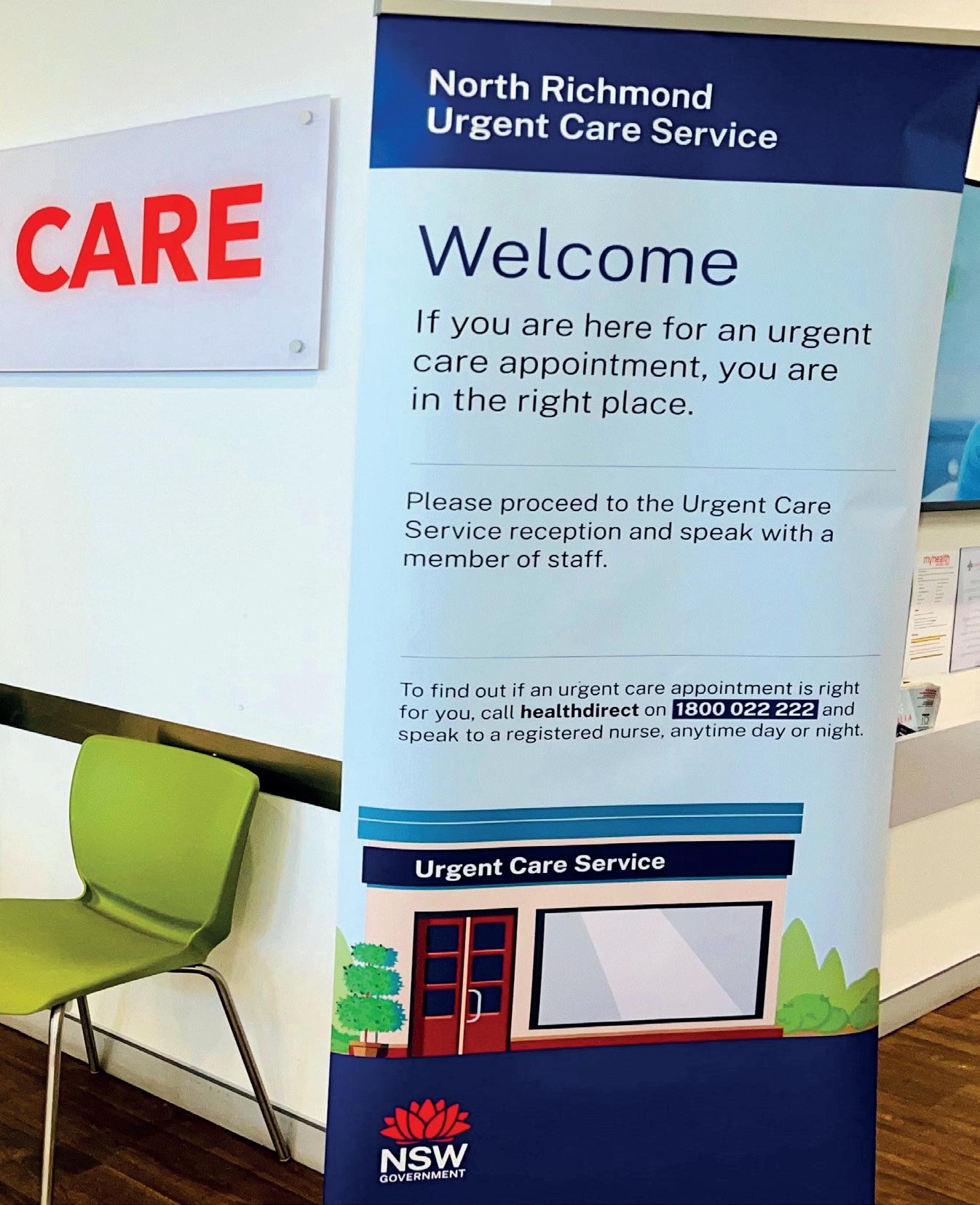







On July 1, Hawkesbury Hospital officially became a fully public hospital, marking a significant shift in the provision of healthcare services in the region. The occasion was marked by a visit from NSW Minister for Health Ryan Park and Federal Member for Macquarie Susan Templeman.
The transition, which had been in the works for some time, was not without its challenges. Representatives from the hospital, NSW Health, the NSW Nurses and Midwives Association, and the Health Services Union (HSU) joined the officials to commemorate the milestone. Susan Templeman highlighted the collective efforts that made this transition possible. “Thanks to the combined efforts of many, including the staff themselves, the Health Services Union, the NSW Nurses and Midwives Association, the Australian Salaried Medical Officers Federation, the Minister, and St John of God, we were able to ensure staff entitlements were protected,” she said. Templeman said the move would lead to long-term improvements in services for Hawkesbury residents. “Hawkesbury Hospital has always delivered important care to the community through its 24hour emergency department, operating theatres, community health services, and outpatient clinics,” she said.
The new MRI machine was one of the latest investments in the hospital. “It was good to speak with ED staff about the constraints they are facing,” she added. “Meeting with staff across the hospital, I could see that the level of care and commitment to the community is strong. I look forward to discussing with the new team what their priorities are as they move forward.”
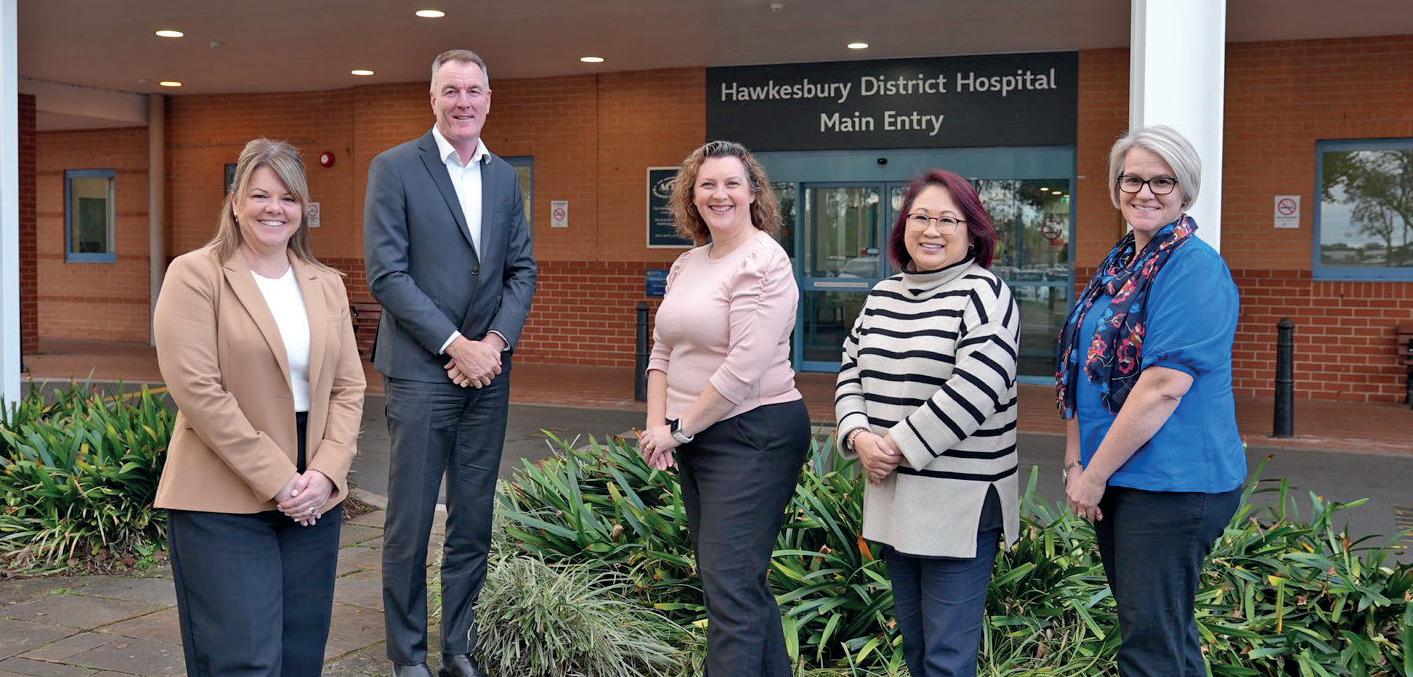
NSW Minister for Health Ryan Park said it was vital that they were able to honour the health staff’s remuneration for a smooth handover, ensuring uninterrupted access to healthcare for the Hawkesbury region. “I’m deeply grateful to the St John of God staff for making the move into the public service and welcome them to NSW Health and the wider Nepean Blue Mountains Local Health
District team, who provide incredible care to the community,” he said. “One of the biggest challenges of this transfer was ensuring the leave, long service, and years of tenure with St John of God were recognised and upheld for our dedicated healthcare teams,” he said.
HSU Secretary Gerard Hayes said members felt relief regarding protecting their entitlements. “After months of
uncertainty, our members were relieved to hear they would retain their annual leave, long service leave, and other entitlements following an agreement between St John of God Health Care and the NSW Government,” he said. “The hardworking and dedicated HSU members who keep our healthcare system running should never be penalised when a service changes hands.”

by Roz Chia Davis
“That’s just how we got into it. My dad just started buying old motorbikes and repairing them, then selling them. He’s a plumber, but he wasn’t making tons of money, either. He was working for a boss and he had four kids, so he had a family to look after. He’d go out, get the Trading Post or Saturday Telegraph, and look up motorbikes. There might be a motorbike – a cheap motorbike – and it might be broken down, but he would go and buy it, and bring it home.”
Once Dave’s dad got the bike going, he’d sell it the following weekend at a profit.
“He did that for years. We still have the receipt books at home. There are over 300 motorbikes that have gone through our mum and dad’s place that he’s bought and sold over a long time. It’s like that. It’s in our genes going way back.”
“I had family members years ago that were racing historic motorbikes,” says Dave. “I remember going out and watching these guys run these historic bikes back then. So, bikes have always been part of my life.”
Dave explains the importance of passion in the automotive industry, saying, “It’s no good just waking up one morning and going, ‘I think I’ll be a mechanic...’ You have to have a bit of a passion for it. And if you’ve got that passion, just go for it at a young age. Get into it, you know? Let your passion be your first career.”
Dave originally wanted to be a motorbike mechanic, but despite motorcycle mechanics featuring in the federal government’s 2024 priority list of incentivised Australian apprenticeships, it was a difficult area to get into at the early stages of his career.
Dave became a light vehicle mechanic instead, and says it’s all turned out for the better.
“I’ve got a great bunch of customers. Some of the customers have become my best friends, too. We’ll go out to dinner, we’ll go racing together, and all that sort of stuff.”
For many months, however, Dave has found it difficult to find a qualified mechanic to join the team at Kurmond Auto Care. Despite the popular workshop’s fanclub customer base and friendly working environment, his advertising to recruit a qualified colleague for fulltime or even part-time employment has proven fruitless.
And he is not alone. Reports of a skills shortage in the automotive industry, among other trades, have ramped up for several years. The federal government’s “priority list” of apprenticeships (for those commencing from January 2024), feature a variety of apprenticeships which relate to Dave’s industry; welding, vehicle trimmers and painters, vehicle body builders, upholsterers, metal machining, fabrication and casting, motorcycle mechanics, glass and glazing, fitter and turner courses, and, as is relevant to Kurmond Auto Care’s interests, the Certificate III in Light Vehicle Technology which a trade-qualified employee must have under their belt.
Richmond TAFE does not offer automotive industry courses.
The closest campus to offer this course, according to the TAFE NSW map tool, is Mount Druitt, which is a 50-minute train journey, with a change at Blacktown, from Richmond. Other campuses in the Sydney metro area to offer this course are Wetherill Park and Hornsby.
According to the Fair Work Ombudsman’s advice on the Vehicle Repair, Services and Retail Award, the weekly rate for the first year of an 18 year old’s apprenticeship is a meagre $516.15. With May ABS data saying 73% of
When Kurmond Auto Care proprietor David Clark was growing up in Winston Hills, he worked on cars and motorbikes with his dad. He describes his mind, and that of his father’s, as “mechanical”, by nature.
apprentices are 24 years old and under, is the Albanese government really doing enough to inspire confidence in young Hawkesbury residents who are weighing up their capacity to survive an apprenticeship – commuting to their place of study and in a cost of living crisis – for up to four years?
Macquarie MP Susan Templeman tells the Post, “We knew things were tough for TAFE before the last election, but we identified two key things in the vocational training sector when we came to government 2 years ago – one was how profound the skills shortage was, including in the automotive industry, and the other was the appalling running down of the public TAFE system.”
Templeman says the government has taken a range of measures to address these issues.
“We’ve encouraged young people to take up TAFE, including offering fee-free courses in several automotive areas such as automotive servicing technology, air conditioning and electricals,” she explains. “Not only are the courses fee-free, but there is up to $5000 in federal government payments on eligible courses to support the apprentice.”
She says that there are now increased incentives for employers to take on apprentices, with a $5000 “priority hiring incentive” also offered to support employers, delivered over the first two years. This federal government scheme for employers comes in addition to a state government “future-proofing” move; offering 1-day training which accredits mechanics to work on electric and hybrid vehicles.
The federal loan scheme – the Australian Apprenticeship Support Loan (AASL) – is also in place, with up to $25,643 available in 2024/25, interest-free, to those carrying out an apprenticeship listed in the Australian Apprenticeships Priority List. Like a HECS/FEE-HELP debt, government information states that the worker is not required to begin repaying their loan until they reach a minimum repayment threshold. The AASL scheme rewards the tradesperson by discounting the loan amount by 20% once they graduate.
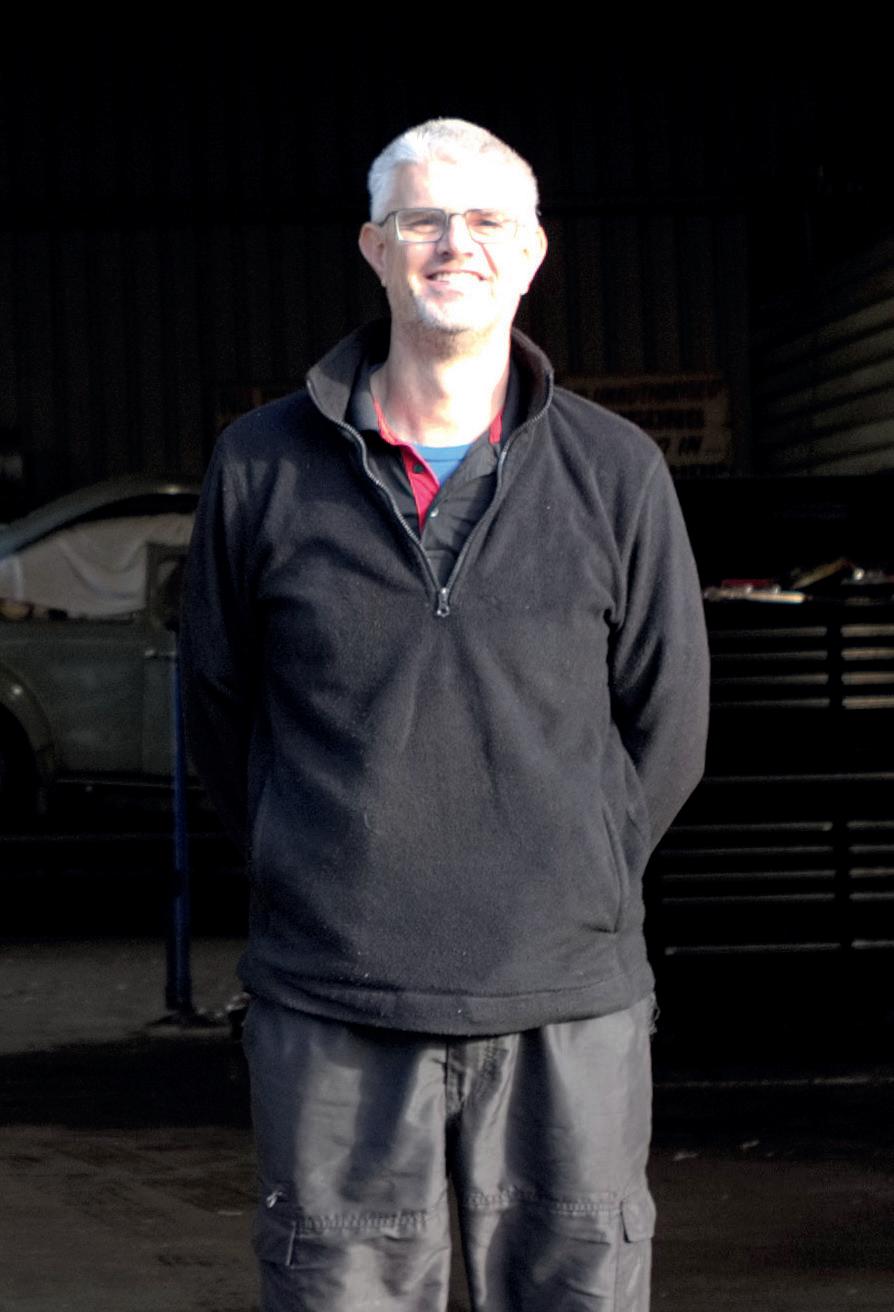
David
For today, however, Dave’s got no solutions, except perhaps to investigate the possibility of hiring someone from overseas. Whoever was around during the 457 visa fiasco remembers it well.
Late last year, former Home Affairs Minister Clare O’Neil announced the Skills in Demand visa; a replacement for the 457 and temporary skills shortage (TSS) visas, which critics said were too dependent on employers and risked worker exploitation. The new visa, set to open for applications at the end of this year, promises quick processing times, flexibility between employers, and pathways to permanent residency.
“We recognise that you can’t turn around a long-standing problem quickly, and employers are able to bring in skilled workers,” says Susan Templeman. “However, our immigration focus is on attracting permanent skilled migrants rather than short-term migration.”
And what of the future of Richmond TAFE’s capacity to offer more courses, more relevant and generalisable skills, and with a view to future-proofing our region? Where TAFE has historically not met demand because of funding cuts,
expensive and inferior private providers have been sure to follow.
Templeman says that the government has also come down hard on poor quality training providers, including demanding higher standards and accountability, and giving the regulator increased powers and tougher penalties to deter dodgy providers.
“These measures support the majority of providers who do the right thing, and whose reputations are damaged by exploitative bottom-feeders. But I think the most important measure is our work with the NSW Government to turn TAFE around. On top of the funding of fee-free places, we’re investing in TAFE technology upgrades. This is part of the five year National Skills Agreement, which allows for $3.8 billion federal funding to support the Minns Government to expand and transform the VET sector, support quality training and implement reforms to address critical skills needs.”
In the meantime, let’s hope Dave Clark can keep open the doors of Kurmond Auto Care. While we wait to hear whether he’s found a new offsider to help him out, he’s got his passion for racing to enjoy with his friends.
“Yeah, so probably five or six years ago, I went in partnership with a friend of mine,” he says, “We bought an historic open wheel race car. It’s a Formula B car. I’ve been racing that on and off for the last few years, but I haven’t raced it for a while. There have been a few issues with engines, and we’ve been rebuilding it. And Kurmond Auto Care sort of takes priority, you know what I mean?” We know what you mean, Dave.

Earlier this year, 8-year-old Teddy Adams received a lymphoma diagnosis, which is a cancer affecting the lymphatic system. In a show of support, his close friend Zakery Hussar will participate in the inaugural Lunchbox Rally alongside his Nana, Lisa Scott, to raise funds for cancer research.
Lisa Scott, affectionately known as “Crazy Nana,” has been a veteran of the Shitbox and Mystery Box rallies for over five years. These rallies, founded in 2010, involve driving across the Australian outback in cars worth no more than $1,000 or at least 25 years old. The events have raised nearly $50 million for Cancer Council Australia, funding crucial research into various cancers and supporting the health and well-being of survivors.
The Lunchbox Rally, set to run from September 27th to October 21st, is a child-friendly version of the Shitbox Rally. It features shorter drives, fewer nights, and more entertainment tailored for kids. This year’s event will see teams of one adult and one child exploring outback Australia.
In the upcoming rally, Scott will be joined by her 9-year-old grandson, Zakery Hussar. Hussar is dedicating his participation to his friend Teddy Adams, who will undergo chemotherapy during
the event. “He’s really happy with me doing it for him, and I’m really happy to do it for him too. I like to support my friend,” Hussar shared.
Scott added that the two boys “probably wouldn’t realise it but have basically known each other from birth.” Hussar described their bond simply: “We both do the same things; he’s got a Nintendo and I do too. We’re pretty simple together, and it makes me happy to be with him and do this rally for him.”
Scott’s rallying journey began in 2018 in Mildura with her son. Since then, it has become a family affair. She emphasises that cancer touches everyone, and she drives in memory of two young children, Chaise and Summer.
Chaise, her first cousin once removed, passed away at just ten years old. “He would have been 18 this year,” Scott said. Summer, the granddaughter of a friend, also succumbed to cancer at a young age. “Even though I say I drive for children, I acknowledge every other cancer,” she said, noting her car’s boot is adorned with ribbons representing various cancers.
Scott and Hussar’s team, “Crazy Nana and Panther,” aims to raise $3,000 for cancer research. To support their cause, donations can be made via the Lunchbox Rally.


By Fiona Hamann
We recently opened our home to an exchange student from France after seeing a call-out for host families on a local Hawkesbury Facebook page. With our youngest in year 12, it was a “now or never” decision. My husband has fond memories and a long friendship with his family’s German exchange student from the 1980s. We applied through the World Education Program (WEP) Australia, which has operated for more than 20 years.
WEP’s NSW/ACT Manager, Dr Ericka Schwarze, says: “Student exchange provides teenagers with language skills, as well as ‘soft skills’ like social maturity, intercultural communication and self-awareness. More broadly, student exchange contributes to peace and understanding between people of different backgrounds and cultures.”
Finding the right Student
Finding the right student is like a dating app. Families select students based on their country, age, and interests. We don’t know their name or see a picture. We chose 16-year-old “H” from France. He enjoyed hiking, trail running and mountain climbing –perfect for life in the Hawkesbury. All the other students listed surfing among their hobbies, which would have made the Hawkesbury disappointing. We selected a French student, as our son Darcy (17) is studying French for his IB, and would benefit from conversation practice.

Part of the Family
From the day he arrived, Hippo, as we called him immediately, fit right in. The two boys quickly became close, adopted a shorthand ‘Frenglish’ language, and behaved like brothers. Darcy’s French and

created a bond it takes years to build with other friends.
“Hippolyte became part of our family and we were sad to see him go. Our strong connection during his time in Australia will allow us to stay in contact for a long time.”

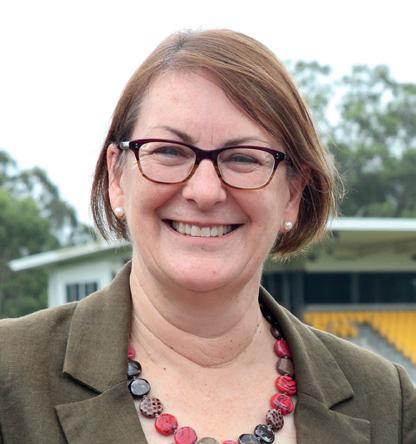
The transition to a cheaper, cleaner future of Australian energy is underway. It’s already happening just across the Blue Mountains in Lithgow at the Mt Piper plant, the newest and most flexible coal fired power station.
I visited Mt Piper last month with Federal Energy Minister Chris Bowen and NSW Energy Minister Penny Sharpe, to see what is already happening to maximise the existing renewable energy sources, and to discuss the opportunities and challenges for operators like Energy Australia.
No one pretends the transition will be without challenges. But after more than 15 years of climate wars, and denial and stagnation under the previous government, progress is being made as we secure the long term future of cheaper, cleaner, and reliable energy.
The Mt Piper power station is leading the way, with changes to its generator that allow it to ramp up and wind down coal-powered generation much more flexibly than previous systems.
Their vision is that reduced capacity for some hours or days gradually

increases as replacement supply comes into the system, lengthening to perhaps weeks, if not months, when there is plenty of cheap wind and solar. But it means the plant is still available to
generate to prevent price spikes during cold, cloudy or windless weeks. This is how we tackle energy affordability and reliability, taking advantage of cheap renewables, as we build battery
and other power baseload.
While nuclear is the most expensive form of energy to build, solar and wind are the cheapest.
The federal government is working with state governments, energy providers and communities to manage the exit of coal from the grid, while ensuring that we seize the economic opportunities that come with increased investment in renewables.
Under the Albanese Labor Government we’ve already seen a 25 per cent increase in renewable energy in our grid. Fifty five new renewable energy projects have been approved since we came into government, with these projects powering over 3 million homes. These projects and sites like Mt Piper engaging with more renewables, are an essential part of our plan to deliver cheaper power bills and cleaner energy for all Australians.
Last year Australia had 330,000 rooftop solar installations, reflecting the community’s desire for cleaner, and more affordable energy. We know affordability right now is a concern for households, which is why we’re giving a $300 energy rebate to every household and $325 for small businesses, to help ease some of the pressure.
The world is undergoing its biggest economic transformation since the industrial revolution – the transformation from old to new fuels. While the Opposition continue to try and weaken investment in renewables, we’re focused on creating a reliable energy system, one that can secure jobs and investment for communities that need it, and one that can reliably power our nation now and into the future.






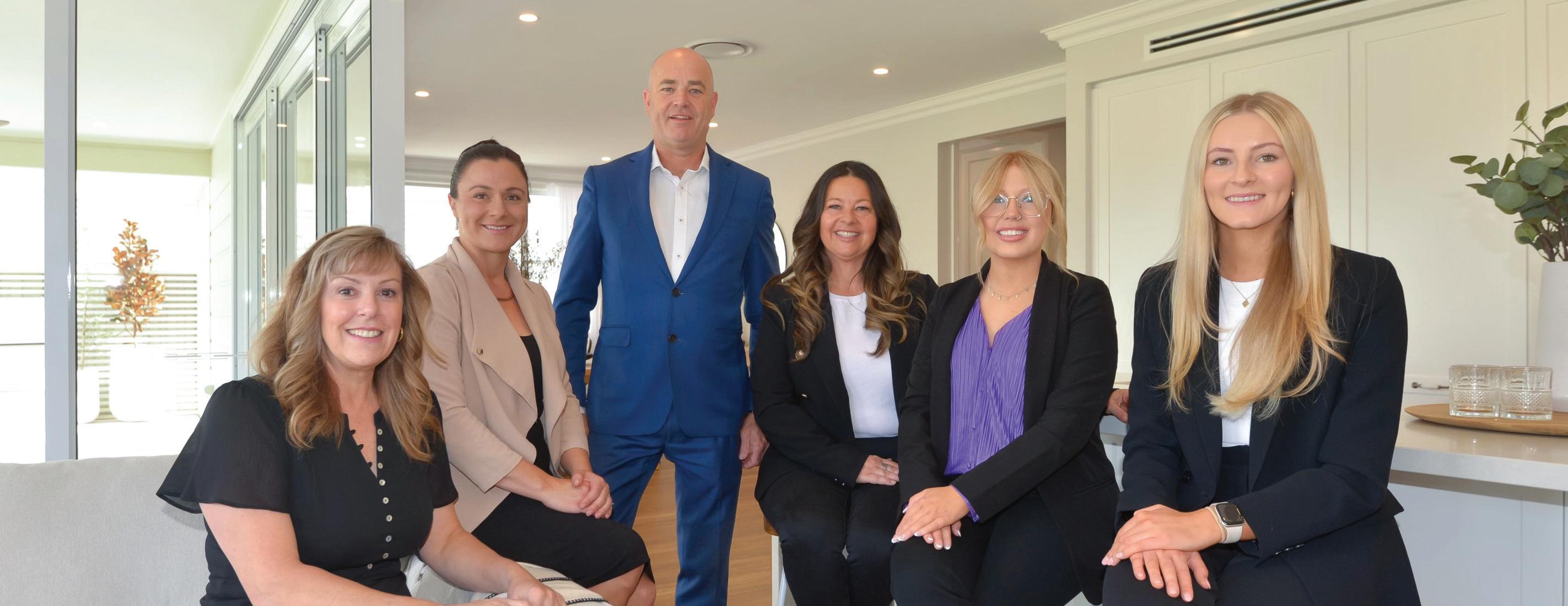

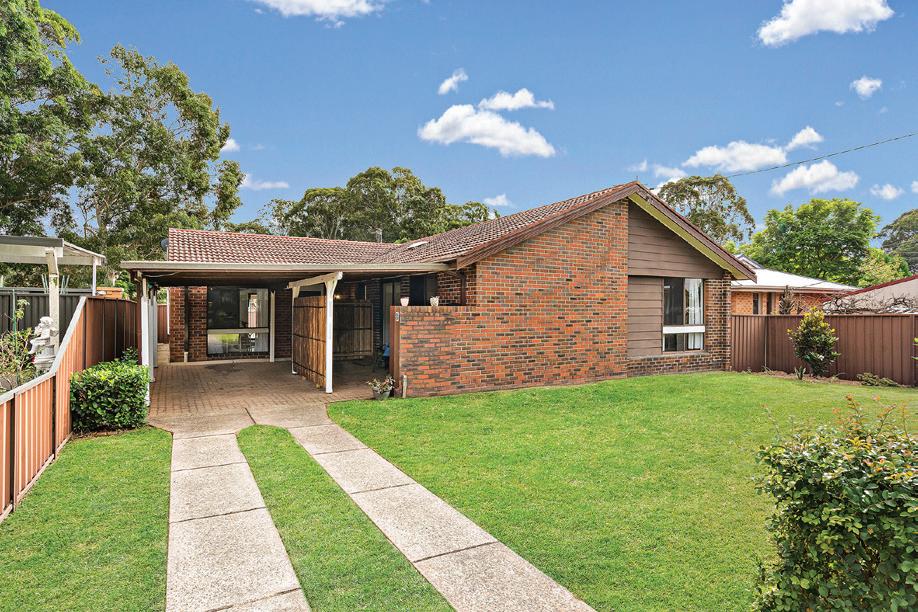

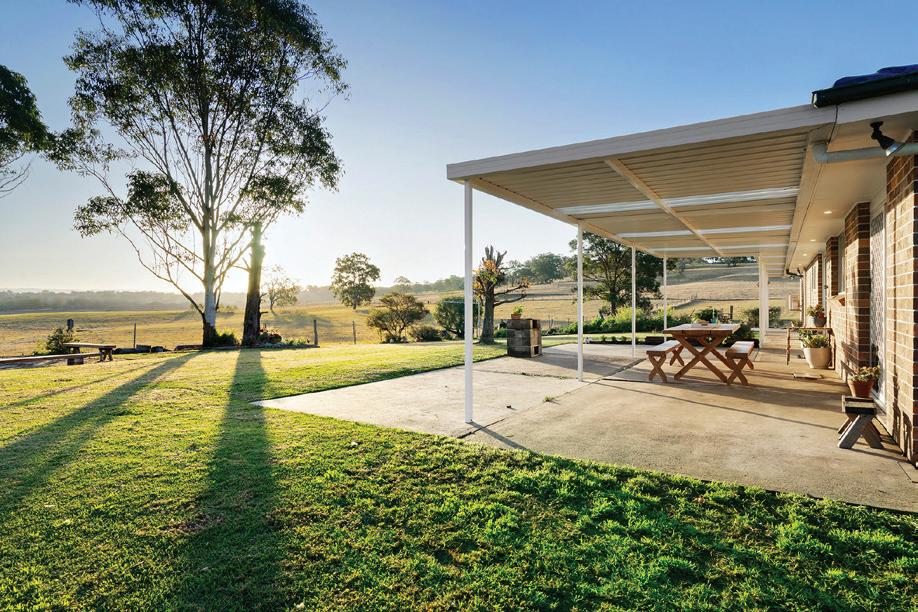

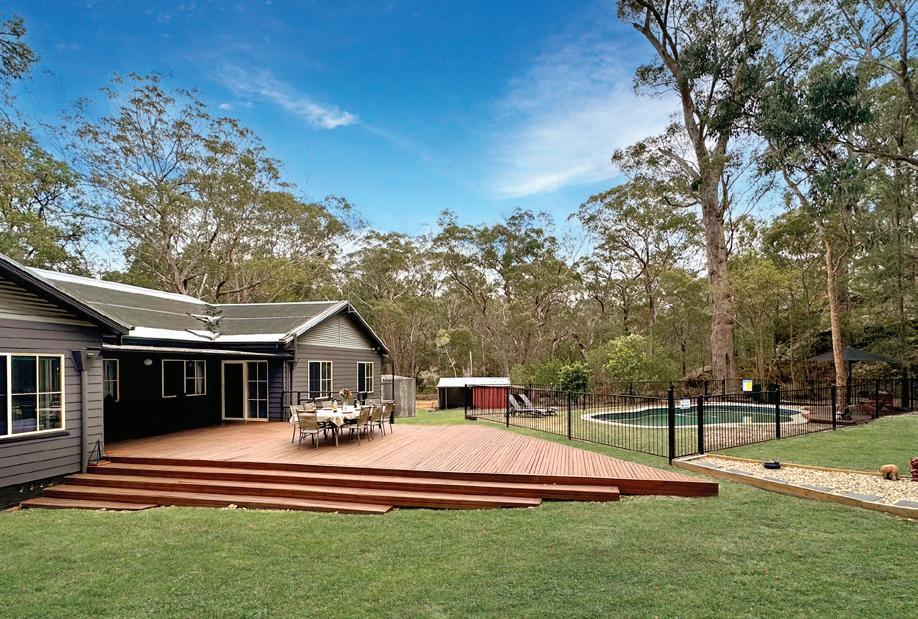
By Fiona Hamann
Pepe’s Ducks is a fabulous local business success story run by a lovely Hawkesbury-based family. It has been delighting food enthusiasts with its premium-quality duck products for years and supplies restaurants across Sydney. In fact, when I first moved to the Hawkesbury, it was one of the delightful culinary secrets my motherin-law shared with me, so it’s high time I shared some recipes showcasing duck. Hawkesbury locals can buy duck products directly from the processing plant at 17 Walker Street, South Windsor Make sure to phone up to leave your order first (02) 4574 6000
We recently hosted a French exchange student, Hippolyte, so French cuisine has been at the forefront of my mind for a while now. That, coupled with the celebration of Bastille Day in mid-July, inspired me to create that French classic–Confit of Duck (or Confit de Canard in French).
Health Benefits of Duck Fat
It involves cooking the duck long and slow, submerged in duck fat. Far from a heart attack waiting to happen, duck fat is full of heart-healthy unsaturated fatty acids, which can reduce blood sugar levels and cholesterol and decrease the risk of heart disease.
You can boast to your guests that this sophisticated recipe took more than 36 hours to make, but it’s surprisingly simple. This dish’s “set and forget” nature allows it to marinade and subsequently cook to perfection while you go about your day. This recipe is perfect for a dinner party because Pepe’s sells Maryland pieces in packs of ten. Alternatively, after the slow cooking process, you can freeze unneeded Marylands portions and quickly finish them off later for a wow mid-week meal.
I’m including last month’s duck soup recipe in the article, which inadvertently dropped off the printed version. My apologies for any inconvenience.
Confit de Canard
This recipe is adapted from a RecipeTin Eats recipe and a Delicious Magazine recipe. You can use a variety of herbs as aromatics. Use what you have on hand. I served it with potatoes roasted in some of the duck fat I used to cook the duck and

French beans in butter and garlic and sprinkled with toasted flaked almonds.
Serves 10
Cook time:
24 hours marinade
8 Hours Slow Cook
40 minutes final cook
Ingredients: Duck
10 Duck Marylands pieces
1.2 litres of Duck Fat (Pepe’s sells this in large tubs as well)
The Aromatic Cure
4 Tb cooking/kosher salt
2/3 cup thyme sprigs, lightly torn
1/3 cup tarragon, lightly torn
2/3 cup sage sprigs, torn roughly 2/3 cup rosemary sprigs, broken up (sticks and all)
2/3 cup oregano sprigs, roughly torn
1 large head of garlic, smashed with skin on, but cloves separated
2 French eschallots
2 Tb black peppercorns
2 Tb Pimento/Allspice berries
2 Tb coriander seeds
12 star anise
4 bay leaves
2 tbsp juniper berries
15 whole cloves
Method:
1. In a mortar and Pestle, quickly pound the coriander seeds, peppercorns, pimento, juniper berries, star anise, and cloves a few times to bruise and release the aromatics.
2. Put the duck in a large bowl and use your hands to rub the salt into the flesh.
3. Mix all the aromatic cure ingredients, except the eschallots and garlic, and add them to the duck, massaging them into the flesh.
4. Roughly line the base of one or two large non-metallic roasting trays with the eschallot. Then add some of the dry
cure and some garlic, put the duck pieces on top (snugly fitting the tray/s), add the remaining dry cure and garlic, cover, and put in the fridge to cure for 12-14 hours.
5. After curing, preheat the oven to 100ºC (or 80ºC fan). Remove the duck, rinse it under the tap, and pat dry with a paper towel.
6. Melt the duck fat in a saucepan over low heat (or even in the microwave)–it won’t take long.
7. Snugly fit the duck skin-side-up into a high-sided metal roasting pan or two. (I could fit all ten snugly into my roasting pan). Pour the duck fat carefully over the duck pieces and ensure they are fully submerged. Then, warm the roasting pan directly onto the stovetop until the fat bubbles gently. Turn off the stove and place a piece of baking paper directly onto the fat, gently pushing it with tongs to remove any air bubbles.
8. Cover snugly with aluminium foil and put in the oven for 8 hours and 15 minutes. To check for done-ness, turn over a piece to check the meaty side –the meat should be fall-apart tender.
9. At this point, you can store the duck pieces until ready to serve. Strain the fat from the meat juices and store the duck pieces submerged in duck fat in a non-metal container in the fridge for about five days. You can also freeze them for a couple of months. I have frozen mine after vacuum-sealing them in bags. To complete the final stage of cooking, you will need to melt the fat and remove the duck.
Crisping The Duck
10. Preheat the oven to 240°C (220°C fan) and place a rack over a deep roasting pan. Remove the duck from the fat, let the excess oil drip off, and gently pat away any residual oil with a paper towel.
11. Pour 2.5cm of boiling water into the roasting pan and place the duck on the rack, skin side up. The steam from the water keeps the duck moist and catches fat drips so the oven won’t smoke.
12. Roast the duck for 40 minutes until the skin turns a light brown and becomes crispy. Rotate the pan for even browning.
13. Alternatively, you can crisp it up by heating a non-stick frying pan and crisping the duck for 5-6 minutes.
You can grab the five-spice powder and noodles from Hartley’s Asian Supermarket in Richmond. This simple Asian-style soup is effortless and a great starter recipe for those new to cooking duck. It’s easy enough for a mid-week meal but pretty enough to serve guests. If you like heat, add chopped red chillies or Siracha sauce to the table for people to help themselves; or for some sweetness, add a dollop of hoisin sauce according to taste.
Serves 4
Cook time – 30 minutes
Ingredients:
4 duck breasts, skin on
1 1/2 tsp five spice powder
1 teaspoon peanut oil
200g dried somen noodles
1 bunch of Buk Choy/ Pak Choi or Chinese broccoli leaves
For broth: 1 litre of good quality or home-made chicken stock
3 whole star anise
5 spring onions, chopped
1 bunch coriander chopped
1. Preheat the oven to 200C. Trim
excess fat from the duck breasts (leaving the skin on).
2. Sprinkle the duck breasts on both sides with the five-spice powder, salt, and pepper.
3. Heat the oil in a large heavy-based frypan, and add the duck breast, skin side down and cook until the skin is brown and crisp (around 3-5 minutes). Cook the other side for another 3 minutes, then transfer the breasts to a baking tray (skin side up) and cook in the oven for 8-10 minutes until cooked to your liking (Duck is best pink in the middle as an FYI). Once cooked, remove from the oven and rest for a few minutes while you finish the soup.
4. While the duck is in the oven, bring the stock and star anise to the boil in a small saucepan and simmer for about 5 minutes. Add the spring onion and the coriander and leave on a slow simmer while you cook the noodles.
5. Cook the noodles in a pot of boiling water or according to the packet. Drain and divide them among four bowls, topping each with the leafy greens. Ladle the soup into each bowl to wilt the greens, and top each bowl with a sliced duck breast. Garnish with chopped red chillies.
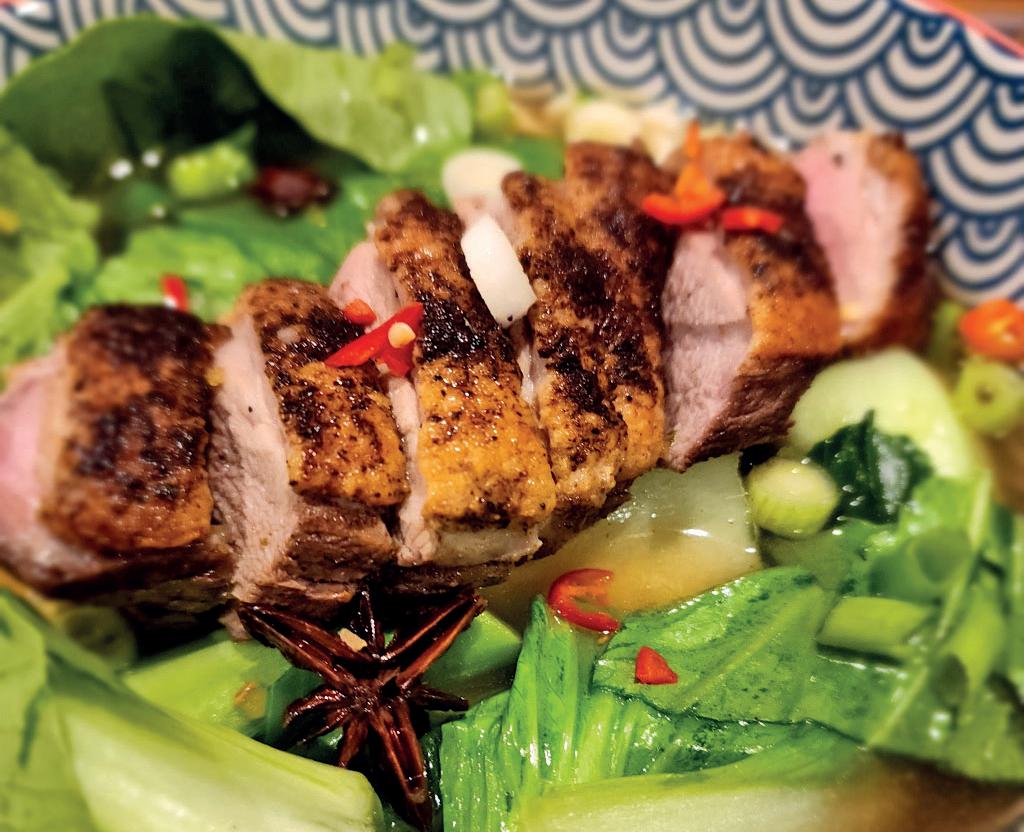

1 What is the name of Radiohead’s fourth album, released in
2 What are stratus clouds called when they contact the ground?
3 Which organisation sent a letter to the band Pet Shop Boys requesting that they change their name to ‘Rescue Shelter Boys’?
4 Raspeballe, vareniki and khinkali are all types of what?
5 In which year was Helvetica, the sans-serif typeface, developed by Max Miedinger: a) 1932 b) 1945 or c) 1957?
6 Philip Seymour Hoffman’s (pictured) first
professional acting role was in a 1991 episode of which television series?
7 What was the only movie to be screened at the very first Cannes Film Festival, in 1939?
8 In which Australian state is the Moore River located?
9 Palaeography is the study of what?
10 On May 6 of which year did the German rigid airship Hindenburg catch fire, killing 36 people?
Place each of the tiles of letters into the blank jigsaw below to create four sixletter words going across and down.

There may be more than one possible answer.

1 Levels (of quality) (9)
6 Conversations (5)
9 Rampaging (7) 10 County in NW England (7) 11 Lackadaisical (9) 13 Astound (5) 14 Colouring (7) 16 Fantasy creature (7) 18 Greek letter (3)
19 Climbing support spot (7) 20 Sewer entrance (7)
21 Member of a Jamaican religious movement (5) 23 Choosers (9) 26 Food (archaic) (7) 27 Distance in models or maps (7)
28 Cooks (quickly) (5) 29 Distributes (9)
1 Horses’ fathers (5) 2 Loathe (9) 3 Tendency (5) 4 Mat (3)
5 Is not good (colloq) (5) 6 Associate (9)
Blood carrier (5) 8 Impasse (9)
Starting with the sevenletter word, drop a letter and form a six-letter word. Continue in this manner until you reach the single letter at the bottom. You can rearrange the letters in each step, if necessary.
There may be more than one possible answer.
Fill in the blank cells using the numbers from 1 to 9. Each number can only appear once in each row, column and 3x3 block
Insert each number from 1 to 9 in the shaded squares to solve all the horizontal and vertical equations. Multiplication and division are performed before addition and subtraction.
Insert the missing letters to make 10 words – five reading across the grid and five reading down.
Using the nine letters in the grid, how many words of four letters or more can you list? The centre letter must be included and each letter may only be used once. No colloquial or foreign words. No capitalised nouns, apostrophes or plural words ending in “s”.
Today’s Focus:
23 words: Good
35 words: Very good
47 words: Excellent
Securing the famously reclusive Tim Winton as her subject for the Archibald Prize was no small feat for Laura Jones. The renowned Australian author and environmentalist is a famously reluctant public figure. However, Jones’s persistence through his agent eventually paid off, leading to a brief yet meaningful meeting in Fremantle, Western Australia. “I looked up to see if anyone else had painted him before for the Archibald. And nothing came up. So I thought, oh my gosh, he must be a very reluctant subject and I just thought there’s no way he hasn’t been asked before. It turns out he was just very reluctant. He doesn’t like the limelight. He prefers to let his work speak for him. So I wrote him a letter and managed to convince him to say, yes,” Jones recounted.
“We had about two hours together and had a really great conversation, which then led to the painting,” she recalls. This interaction allowed Jones to capture Winton’s essence. “I was blown away by his approach to conservationism and how he navigates the climate crisis in an accessible, interesting, and hopeful way,” she explains.
During their conversation, Jones and Winton talked about life, environmentalism, and creativity. “We talked about life and creativity more broadly. He was very warm and funny. Neither of us likes having our photo taken, so I didn’t want to spend too much time staring at him and doing actual drawing. I wanted to spend the time remembering his face so that when I got back to the studio, I could rely more on memory.”
Jones’s painting style is characterised by spontaneity and a profound connection to her subjects, often using memory and emotional resonance rather than precise sittings. Her painting of Winton reflects this approach, with blurred edges conveying the weight of his environmental concerns and his reluctance to be in the spotlight. When she told him she had won, he joked, “It looks like I put the weight of the world on my shoulders.”
“I found out things like he writes all his books with a pencil, blocking out the outside world while sitting in a dark room with just pencil and paper, which I didn’t know,” she says.
Winning the Archibald Prize was a significant milestone for Jones, marking the culmination of years of effort. “That was the fourth time I’ve been selected as a finalist, and I’ve entered about eight or ten times over the past decade,” she explains. The recognition brought a whirlwind of events and opportunities. “It’s amazing. There are always a lot of events at the gallery and wonderful opportunities to talk to people and other artists. But otherwise, I’m back in the studio painting,” she says. A particularly touching moment was receiving a letter from Federal Member for Macquarie, Susan Templeman, who mentioned her win in Parliament. “It’s not every day you’re recognised in Hansard. That was pretty amazing.”
Jones’s journey as an artist began in her childhood, nurtured by her parents’ encouragement of her creativity. Growing up in the beautiful environment of the Hawkesbury, she developed an appreciation for nature and a love for making things. “I spent a lot of time making
Recently, Jones moved back to Kurrajong and hopes to bring her studio back here too. She looks forward to seeing how this return home will influence her work. “It’ll be interesting to see how my work changes and how that kind of coming home and seeing the Hawkesbury in a new light after 20 years away will affect my painting,” she says. Spending more time in the bush and drawing inspiration from the local environment is something she anticipates.
things as a little kid and spending time in nature. It was just kind of me,” she reflects. Despite considering other career paths, she always felt the pull of art and eventually dedicated herself to it, working odd jobs in her twenties before gaining recognition through exhibitions. Her approach to painting is intuitive and fluid. “The requirements for the prize are that you spend an hour in a sitting, but I’m quite a fast, messy painter, so two hours was plenty and I was just thrilled to have such a great conversation with him. And I think it was that, that really sat with me when I went to go and do the actual painting,” she explains.
Jones’s conversation with Winton covered a range of topics, including the environment, political activism, and their creative processes. “We talked a lot about the environment and the state of the world, and how we both think the climate crisis should be treated like the pandemic, pulling out all stops to get it done.”
Jones’s love for color is evident in her work. Her bold use of color aims to evoke joy and a sense of aliveness in viewers. “I think as a kid, I was always making collages, which I think was a way of experimenting with color, sort of seeing what
happens when you place one color next to another color, and the kind of energy and the contrast and the different effects you can get from experimenting with that. Painting is really all about that for me, I find color to be the best way for me to express myself and express an emotion, and color can convey intensity, but also moodiness and all sorts of emotions. And I really love using color to make people feel joy,” Jones says.
Struggles are an inherent part of Jones’s creative process. She acknowledges that there are days when things don’t go as planned, but she views these challenges as integral to her growth as an artist. “It used to scare me because you’re worried about wasting materials, but now I see it as part of the process,” she says. This pragmatic approach allows her to embrace the ups and downs, constantly evolving and refining her work.
Jones finds inspiration from various artists, including Australian artist Margaret Olley, whose cluttered home studio filled with ceramics and vases she had the chance to explore during a residency at the Tweed Regional Gallery. “I spent a month borrowing her vases and painting local produce and flowers with her stuff. It was really inspiring,”
she shares. She also admires contemporary artists like Clara Adolphs, whose ambitious scale and innovative work continue to inspire her.
Her studio, located in Darlinghurst, Sydney, is a space filled with high ceilings, big walls, and lots of paint on the floor. She describes a typical day as starting with coffee and a bit of exercise before diving into her work. “I usually try to get the admin out of the way, then get into deep focus, making paintings. I might have a few paintings on the go over days, weeks, or even months,” she explains. Her process involves a lot of spontaneous marks and refining, sometimes leading to discarding a piece if it doesn’t work out.
“It’s a beautiful area, because we have that really rugged bush, but also the beautiful rolling hills. We’re so lucky to have that kind of rural atmosphere. When you’re in the city and it’s winter, it’s freezing, the shadows of all the buildings, you just don’t feel the seasons as much. When you’re in the bush or hills, you do feel closer to nature, and you can be in the sun, see the light through the trees, and it’s just all those beautiful outdoor moments that make it a beautiful place to be,” she says.
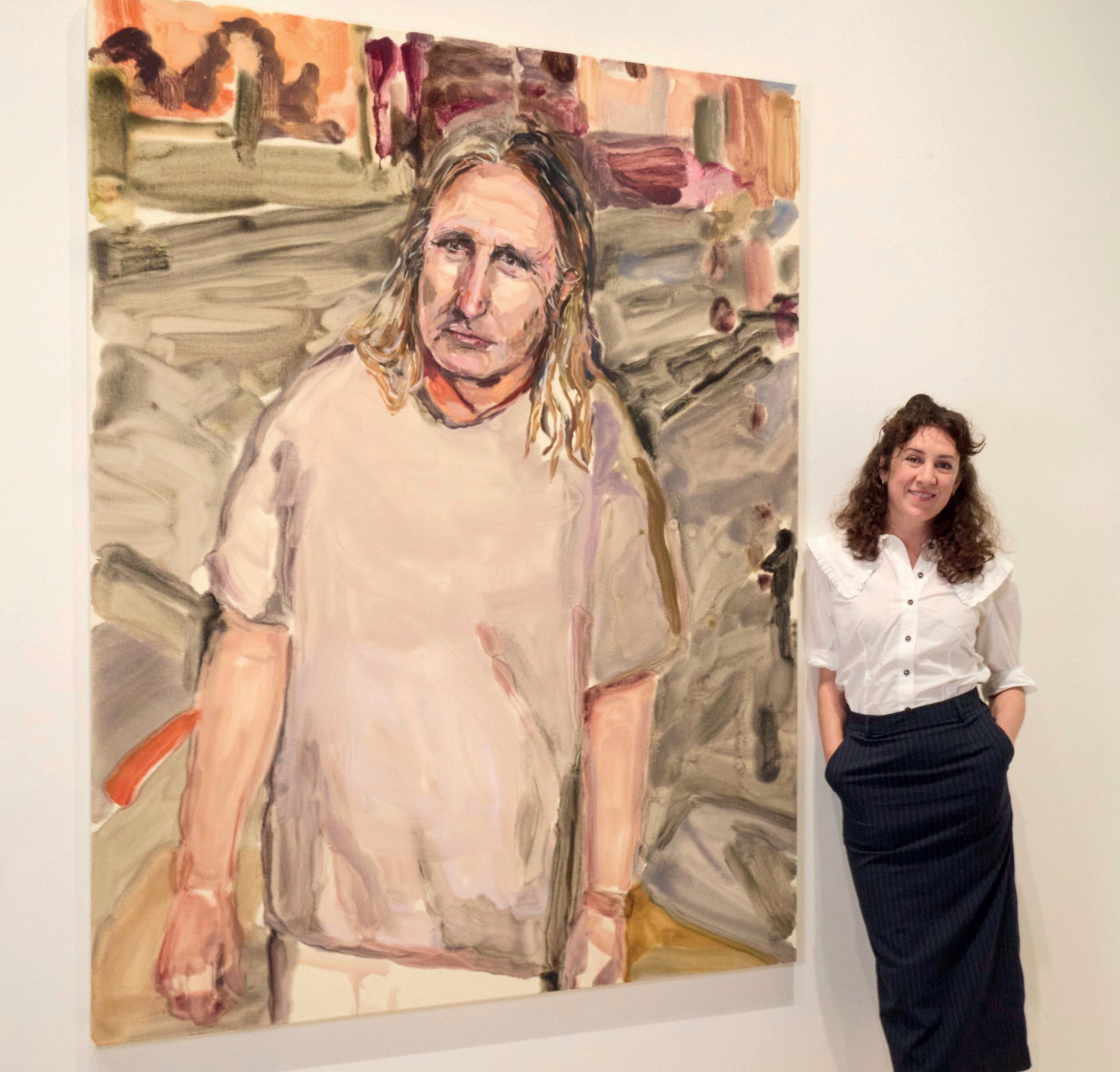
By Imy Abbott
Josh Liston, a Year 10 student at Arndell Anglican College, has made significant strides in the rugby world as an emerging player. His recent accomplishment includes being selected for the Under 16s AICES (Association of Independent Co-Educational Schools) Rugby team, representing 82 different schools across New South Wales.
To earn his place on this selective team, Liston attended a weekend training camp at the beginning of his school holidays and then competed in the NSW Schools Representative Competition at St Gregory’s College in Campbelltown.
“Earlier this year I made the Hills Zone Rugby team, which enabled me to trial at the AICES selection Gala Day,” Liston explained. “I was lucky enough to then make the U16’s AICES rugby team, which then went on to play in the U16’s NSW Rugby Schools competition.”
In the AICES team, Liston will face competition from five other teams, all comprising students from various schools. His school has shown strong support for his rugby journey. The Head of PDHPE and Sports commented, “We are so proud to see Joshua gain recognition for his rugby achievements. He is a fine rugby player, but more than that, he is a wonderful young man who displays all the key ingredients necessary for success: humility, character, teamwork, and respect.”
Liston said he was proud to represent his school. “Recently, I’ve begun to play

for my school at Arndell Anglican College and have really enjoyed the experience. We went from barely being able to field a team to having over 40 sign-ups, all thanks to my coach, Benjamin Allen.”
In addition to his achievements with the AICES team, Liston was also selected for the U18’s Crusaders team, playing in the Northwest Championship. His

passion for rugby began at the age of 9.
“I started playing for Dural Rugby as an inside centre and quickly fell in love with the game,” he said.
Through Dural Rugby, where his father is his coach, Liston had the honor of being the flag bearer at the Wallabies vs. Wales match on July 6, 2024. “Recently, I have also had the honor of being the
flag bearer at the Wallabies vs. Wales game at Allianz Stadium, where I went out onto the field and stood next to the Wallabies team and sang the national anthem representing Dural Rugby Club.”
“Joshua is a wonderful ambassador of Arndell Anglican College, and we continue to support him in his rugby endeavours,” said Mr. Gordon.

Australia’s first all-female showjumping team is set to begin their competition in Paris, marking a historic moment for the country’s equestrian sports.
Among the team members is Glossodia resident Amber Fuller, who has been named the travelling reserve. Although not competing, Amber’s inclusion in the team is the culmination of a dream she has pursued for more than 40 years.
Amber’s journey to Paris comes after a highly successful campaign in Doha and Europe, riding her flamboyant grey gelding, Nopal van Tallaert, owned by the Douglass family. She joins fellow Australians Edwina Tops-Alexander, Hillary Scott, and Thaisa Erwin, who are based in Europe and the United States, respectively.
Edwina Tops-Alexander, another distinguished member of the team, has deep roots in the Hawkesbury. She was based in Wilberforce for many years before moving permanently to Europe to pursue her equestrian dreams.
Fuller shared her excitement and motivation with her Facebook friends after her selection, offering words of encouragement to those pursuing their own dreams:
“How it started vs how it’s going… Never give up. Never stop trying. Chase your dreams relentlessly. If you want it enough you will always find a way. It won’t be easy. So many times it won’t be fun. But always remember if you keep going, anything is possible. Yes, even the Olympics. And always, always pat your pony because every horse you ride is taking you one step closer to your dreams.”
The Hawkesbury community is immensely proud of Fuller and extends their best wishes to the entire team as they compete on the world stage.
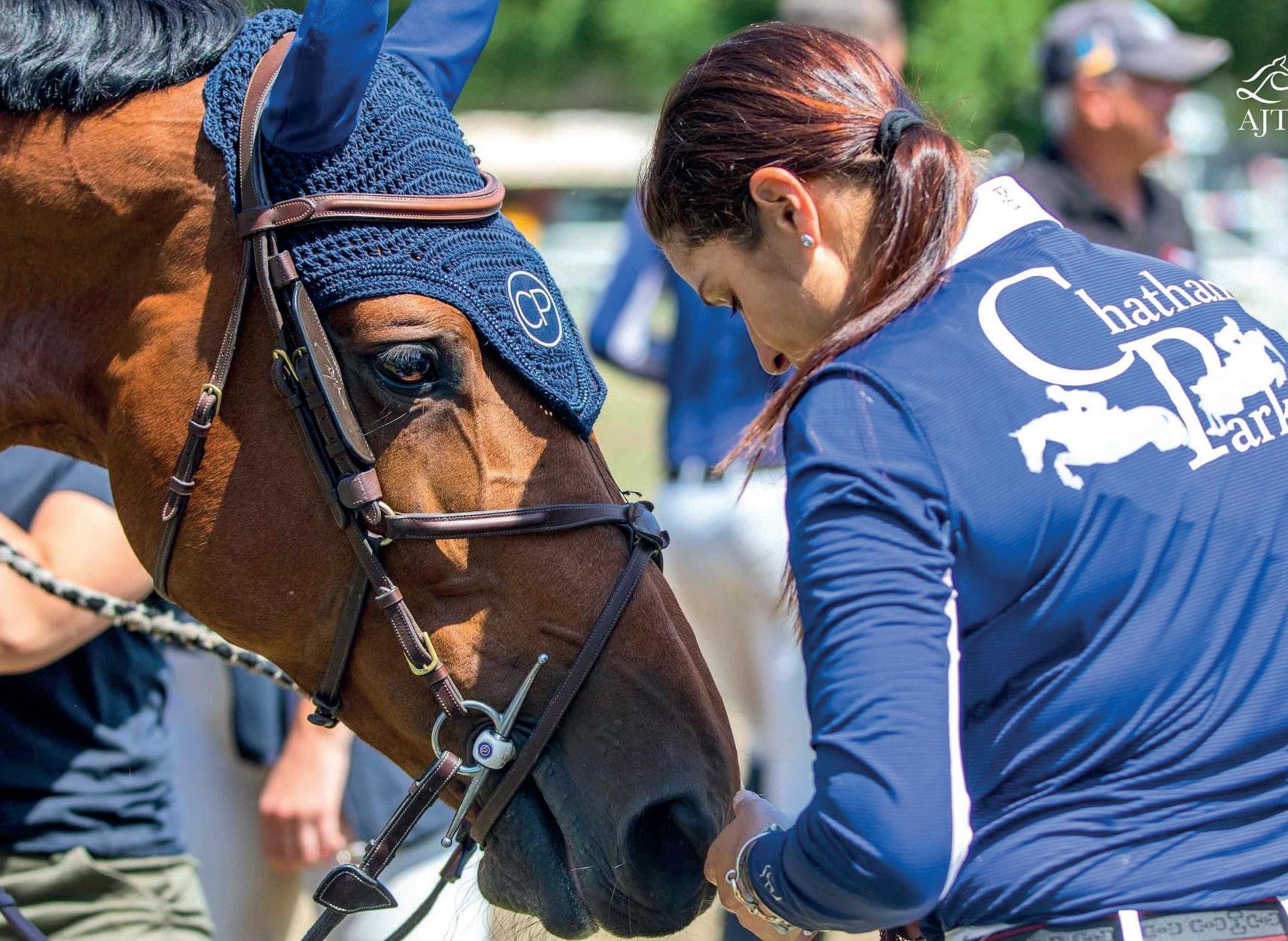

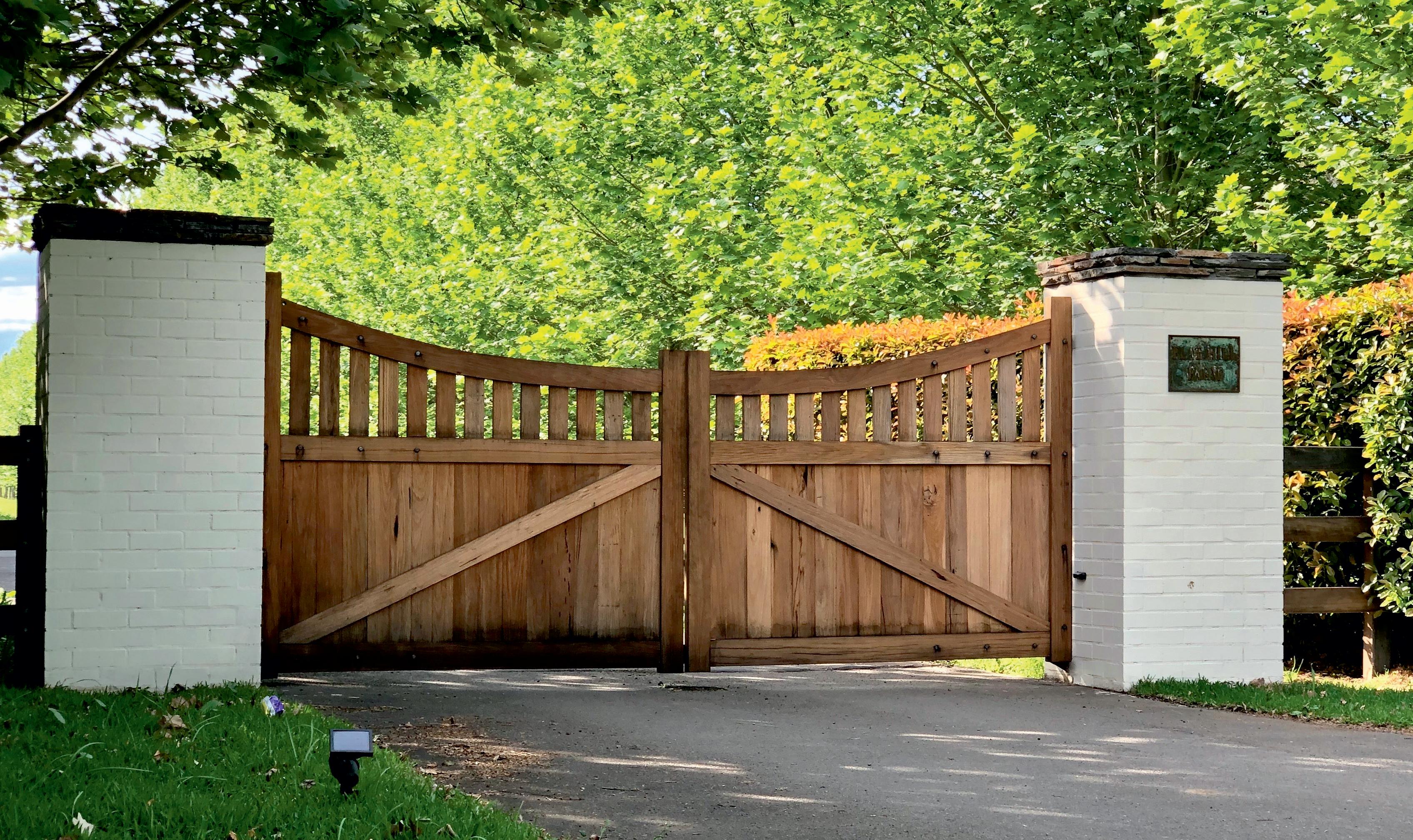

When the world watched Christopher Burton complete a flawless cross-country round on the second day of eventing at the Paris Olympics, it became evident that it would take an extraordinary effort to surpass him. And it did. Sitting in bronze position heading into the final test, the show jumping, Burton faced a formidable opponent: Germany’s Michael Jung, a man who has won three individual gold medals in eventing and now a fourth. Burton needed to jump double clear and hope for Jung to have two rails down. In the end, Jung only took one rail and claimed the gold. Burton secured the silver.
Team mate Shane Rose knew Burton was a serious chance of a medal. “It’s always great to be on a team with Chris, he is the ultimate competitor. We knew going into the Paris Olympics he was a real individual medal chance and he delivered,” Rose told the HP. It was a spectacular result, especially considering it had been 24 years since Australia last took individual gold at the Sydney Olympics in 2000. Even more extraordinary was that Burton was shortlisted not just for the eventing team in Paris but also the show jumping team – a feat never accomplished before at one Olympics. The only other rider to have competed in two disciplines at the Olympics is equestrian legend, Vicky Roycroft. Known as the fastest cross-country rider in the world, a perfectionist in
As the epicentre of equestrian sports in Australia, the Hawkesbury boasts many remarkable riders, but Christopher Burton’s performance at the Paris Olympics might have just earned him the title of the greatest.
dressage, and a highly skilled showjumper, Burton was always favoured. However, his recent shift towards showjumping and away from eventing may have overshadowed just how exceptional he truly is.
“Burto,” as he is affectionately known, was born in Queensland on a grain and cattle farm at Brymaroo. He rode from a young age but did not win his first competition until he was 16 years old, relatively late for those who prefer to spot talent and winners at a much younger age. In an interview with Equestrian LIfe Magazine, Burton fondly recalled one of his first ponies “Spice.”
“I remember we were so little we couldn’t saddle her up and if we fell off, we would keep hold of the reins and try to find some food to get her to lower her head so we could climb onto her neck and hold onto her ears, and she would lift her head up and we would scramble on and ride home.”
With riding now a career, Burton moved to New South Wales to further his eventing, spending ten of his formative years in the heartland of horse sports – the Hawkesbury. While pursuing his eventing career, he rode track work for Philippe and Tara Vigouroux from Vigouroux Racing Stables at Clarendon to pay the bills. There were ups and downs, but it was perhaps the downs that crystallised his internal grit and gave him the confidence in his natural talent to tough it out for years in the most competitive eventing platform in the world. In 2011, he moved to the United Kingdom to compete against the world’s best on the toughest courses.
Burton was selected for the 2012 team for the London Olympics and came home with a team bronze at the Rio Olympics, shared with Shane Rose, Stuart Tinney, and Sam Griffiths. Individually, he came fifth, but this was perhaps overlooked by the team result and the public following a hilarious post-event media interview
given by the team. Although selected for Tokyo, his horse Quality Purdey was ruled out due to injury before stepping on the plane to Japan. In 2024 Burton was selected on the eventing team for Paris, even though he had turned his focus to show jumping and had only been campaigning his horse Shadow Man for six months before the games.
Burton had his eye on Shadow Man for years. “I honestly think he’s the best horse in the world. He’s the most beautiful animal, very easy to get to know,” he told the Sydney Morning Herald.
Burton had tried to buy him years ago without success, but luck and circumstance allowed Burton to lease the 14-year-old gelding for six months to aim for the Olympics.
The rest is they now say is history and “Burto” has etched himself into the annals of Australia’s sporting history. What next? Burton and his family after years abroad will head back to Australia permanently, having purchased a property in Goulburn where he hopes to focus on teaching and showjumping.
But for any equestrian watching Burton’s dressage test, cross-country phase, or show jumping performance during the Paris Olympics, it was evident that Shadow Man was spectacular, almost as spectacular as the Australian boy from the bush who became one of the best riders in the world.